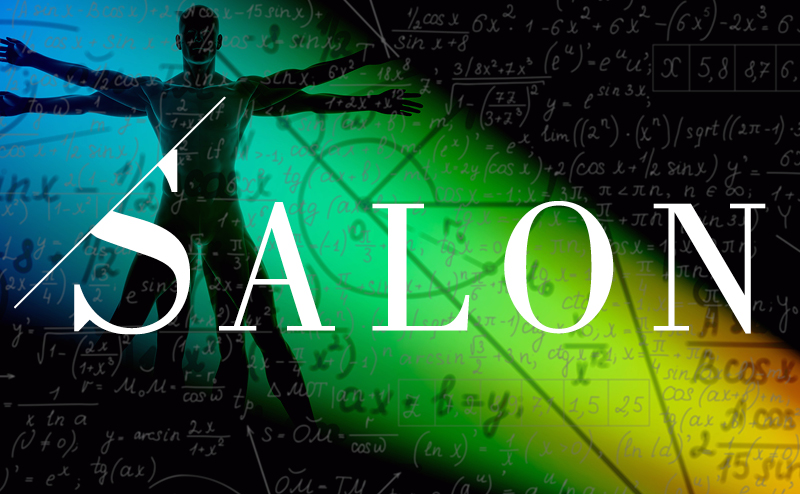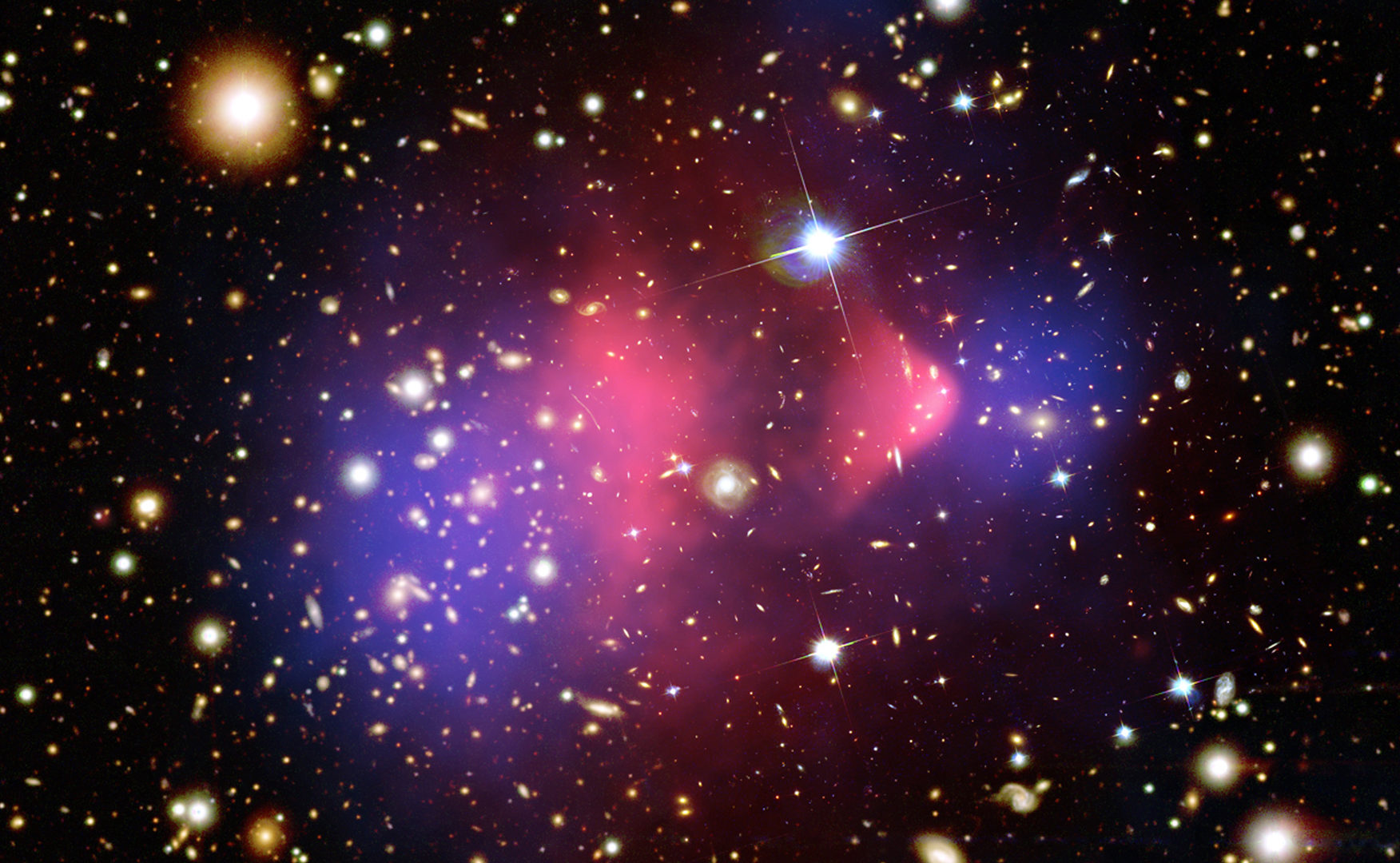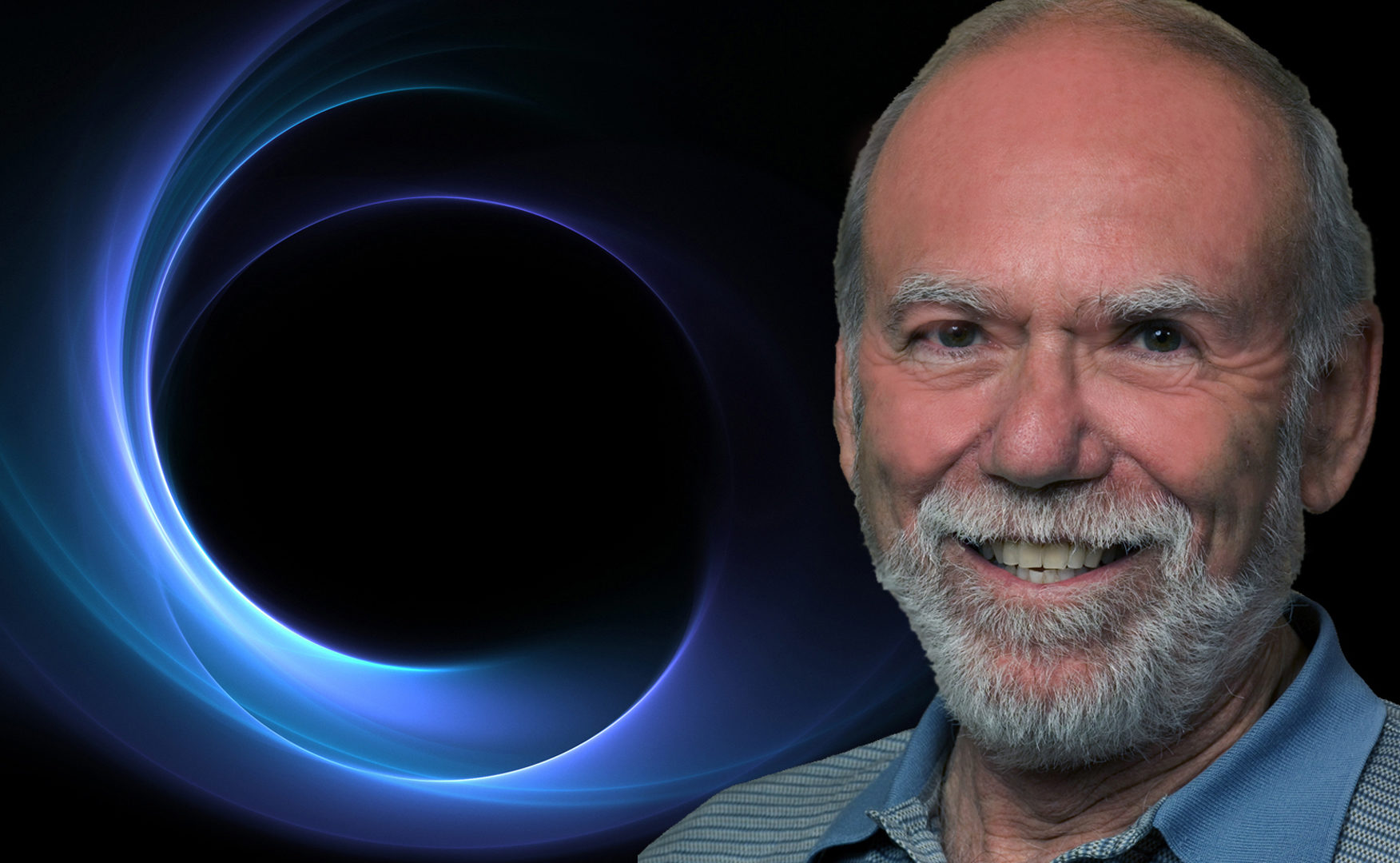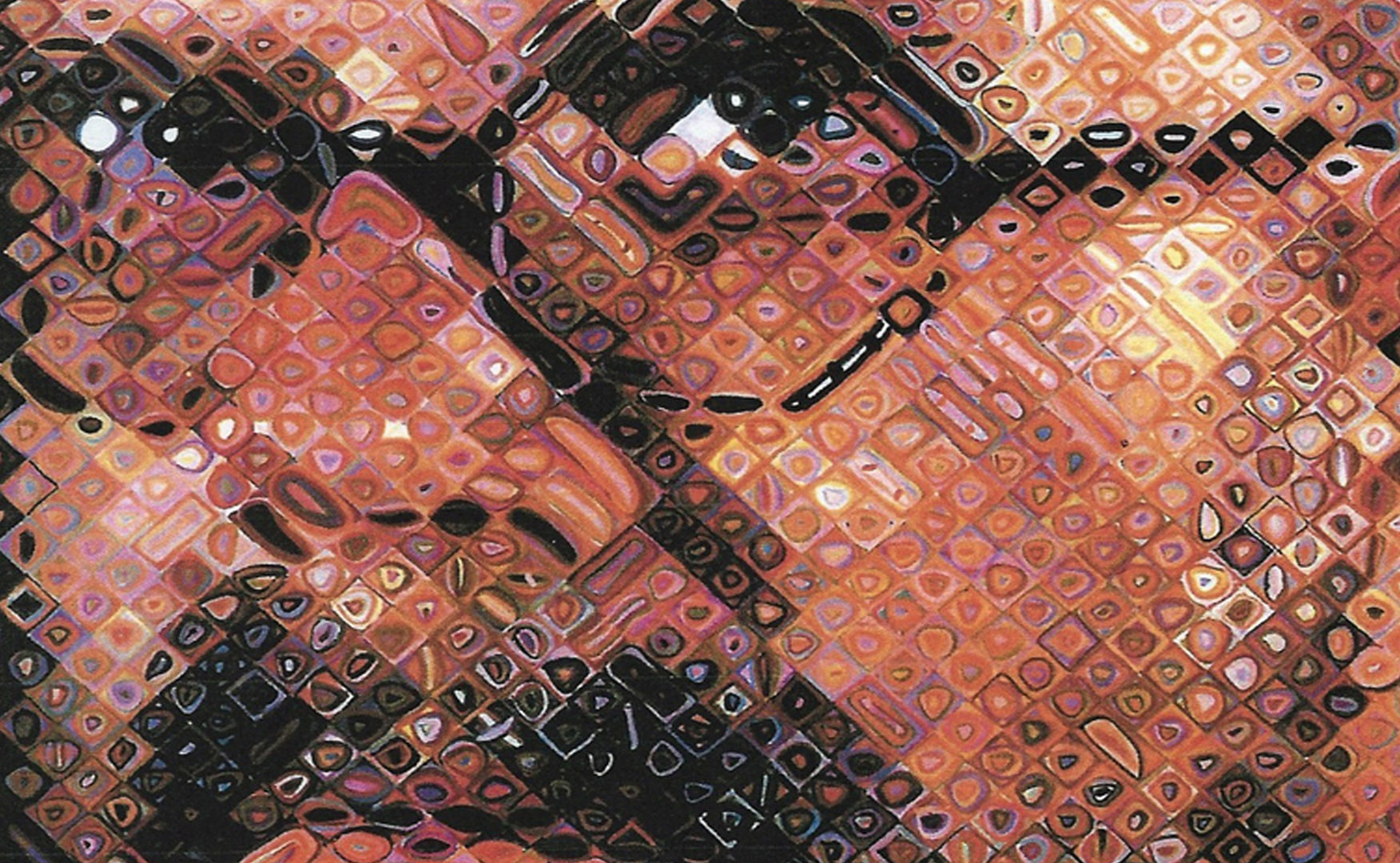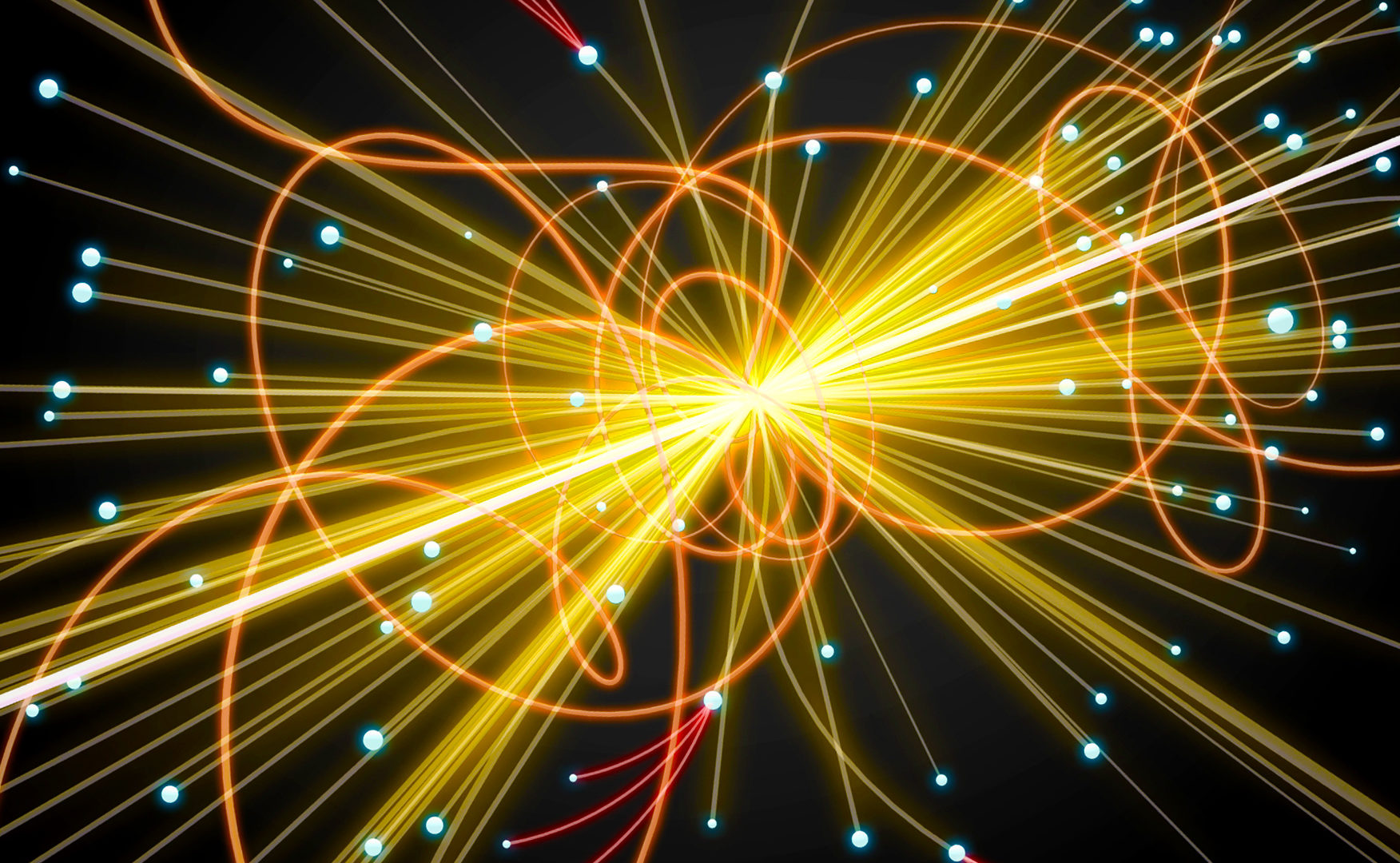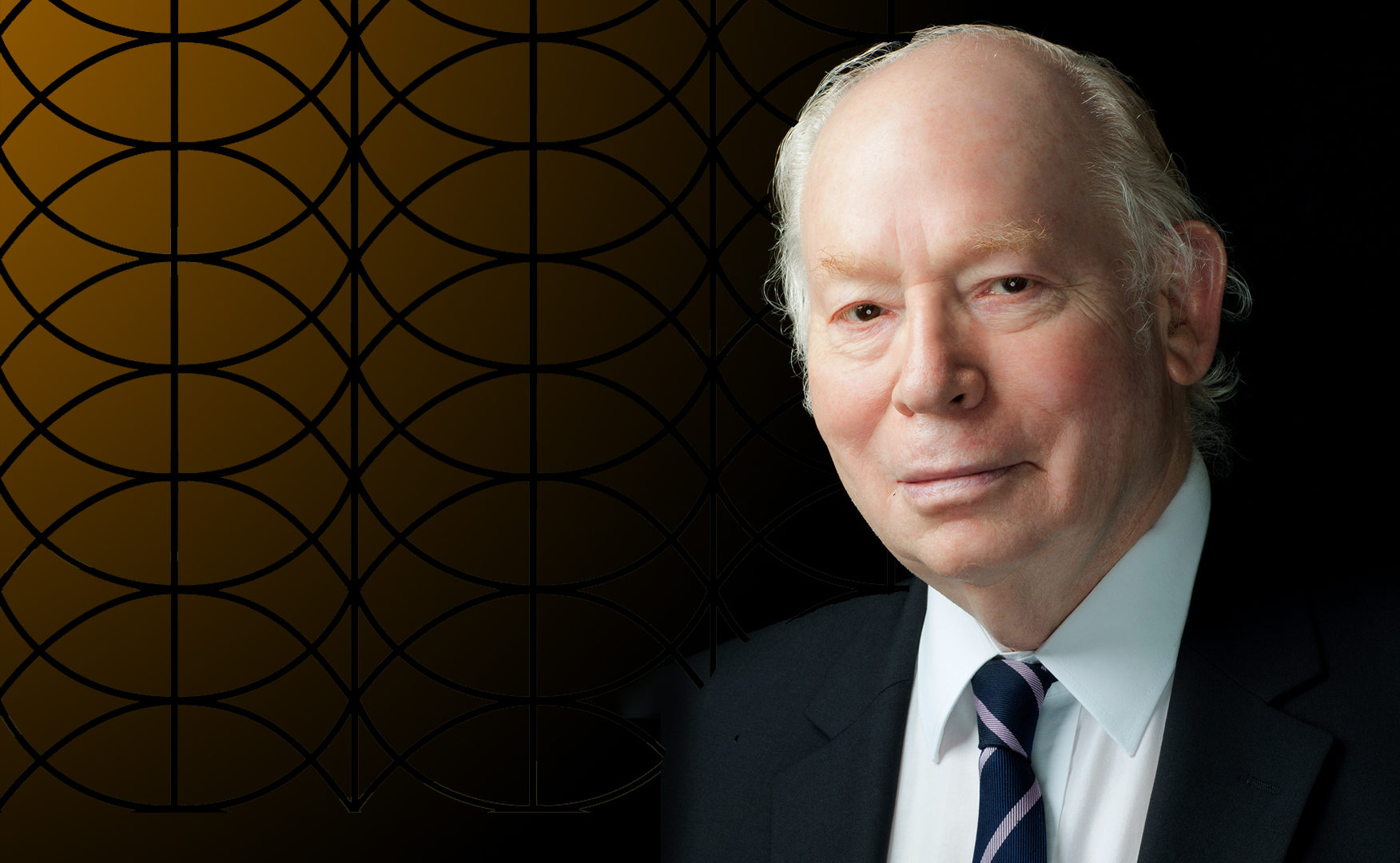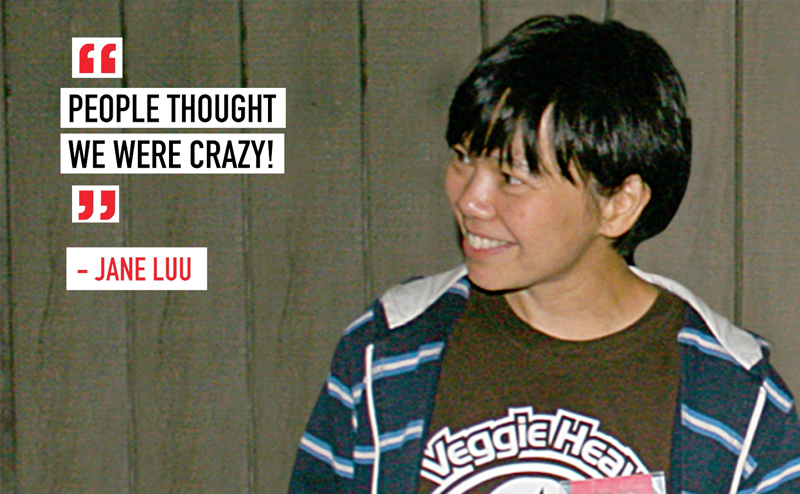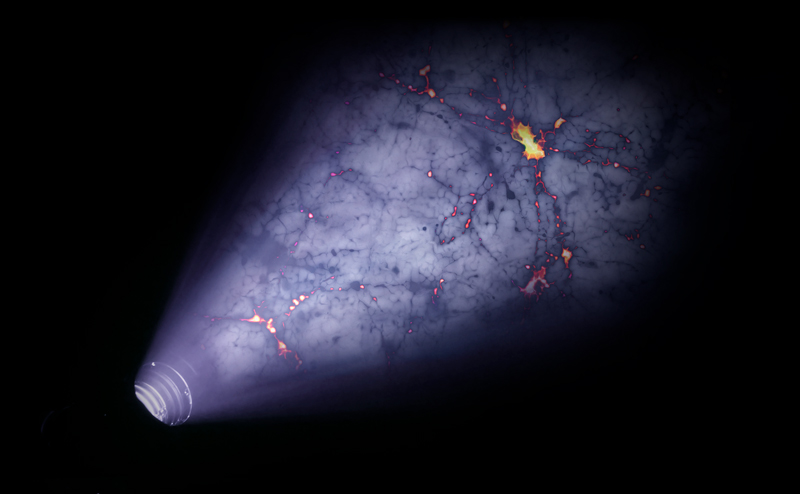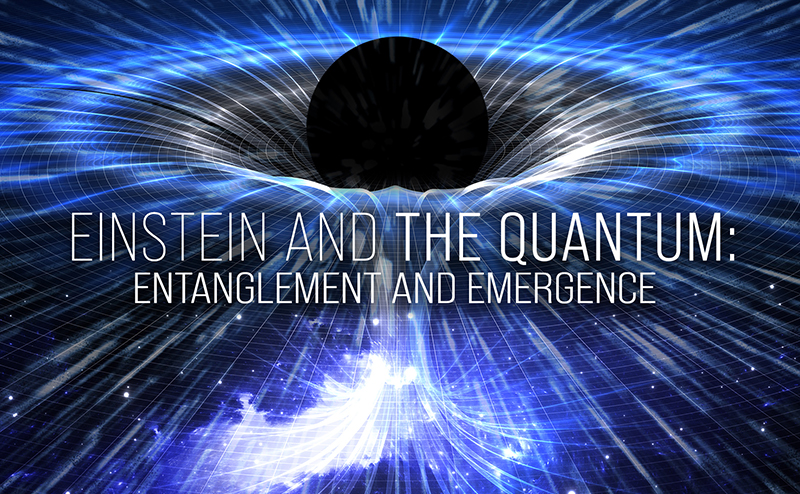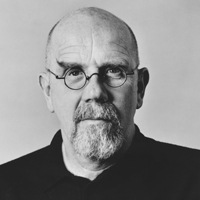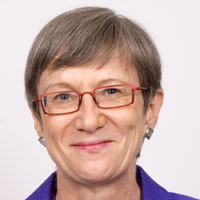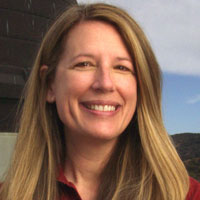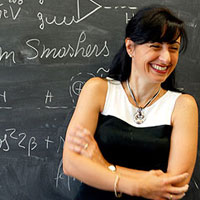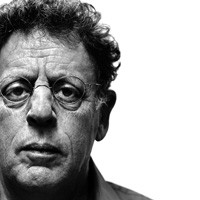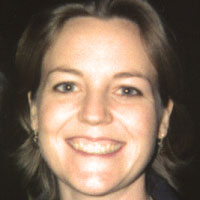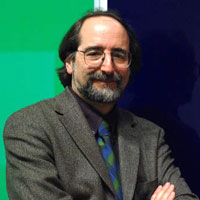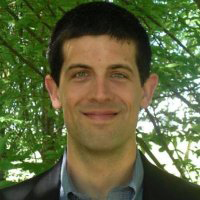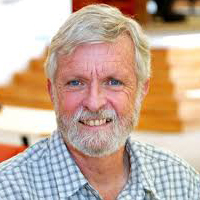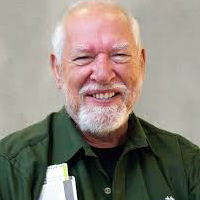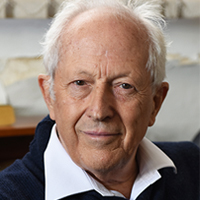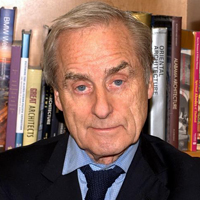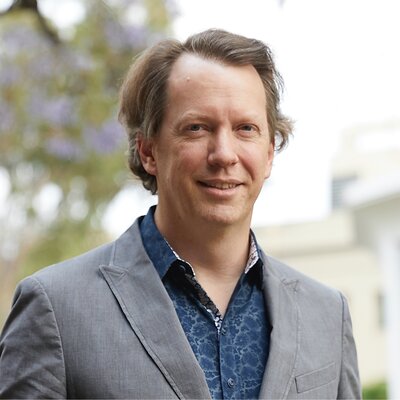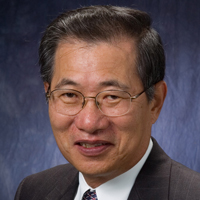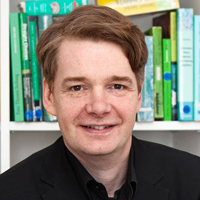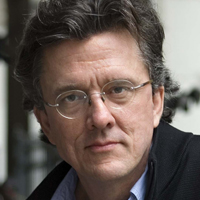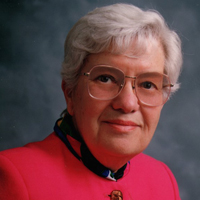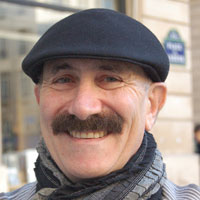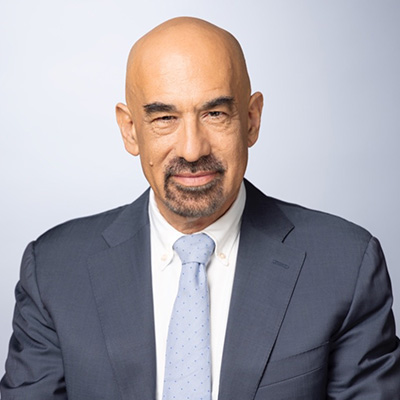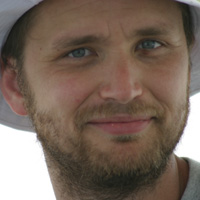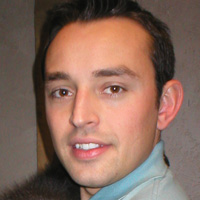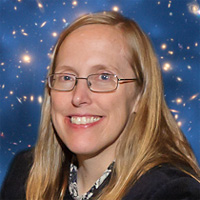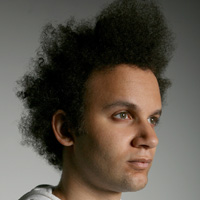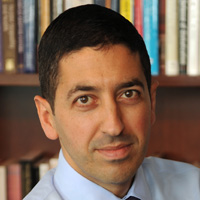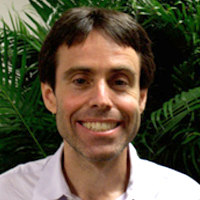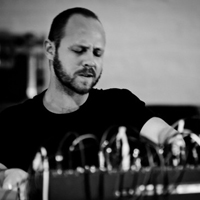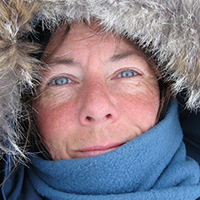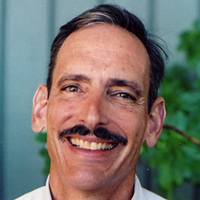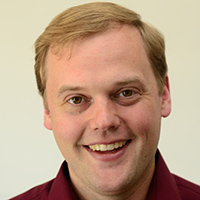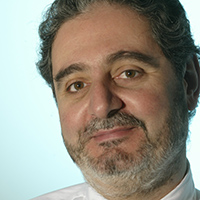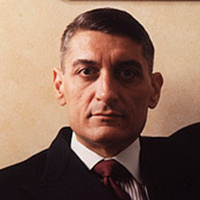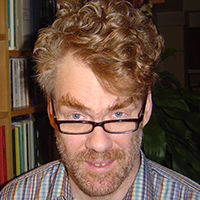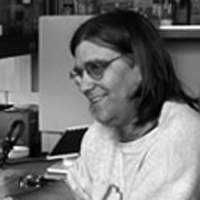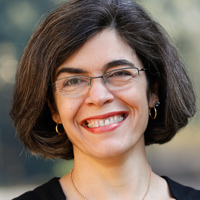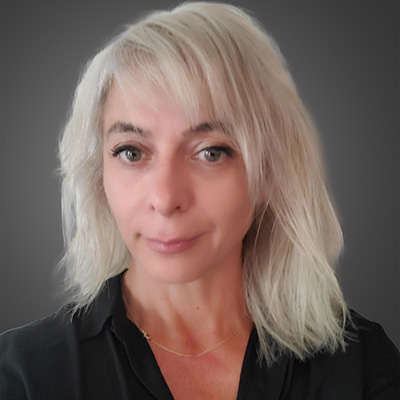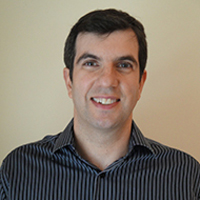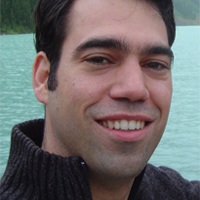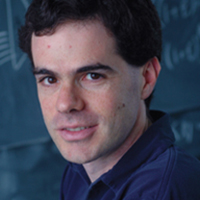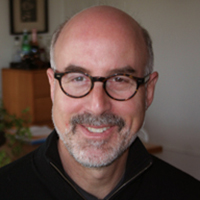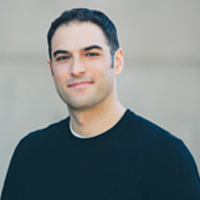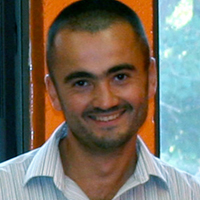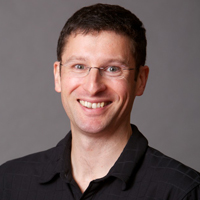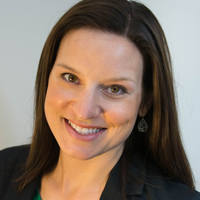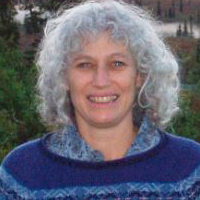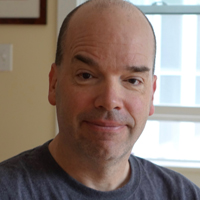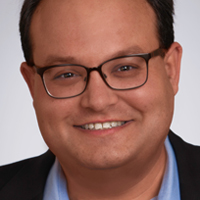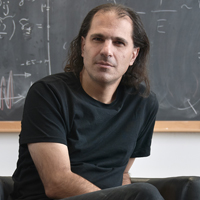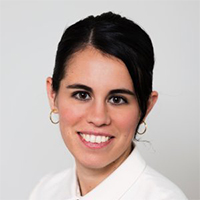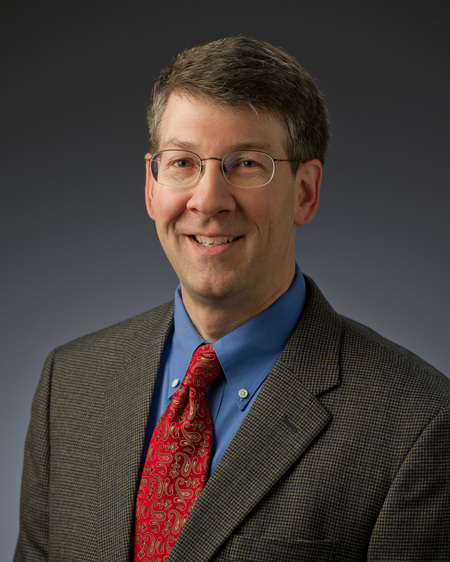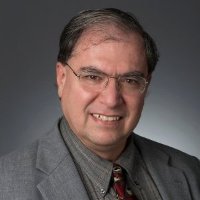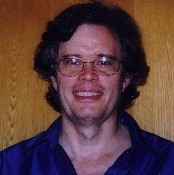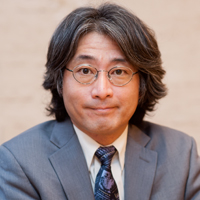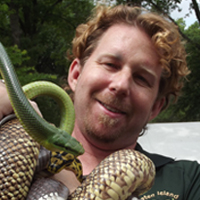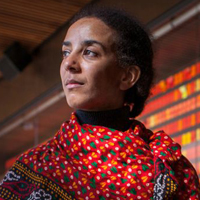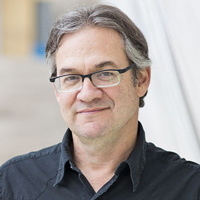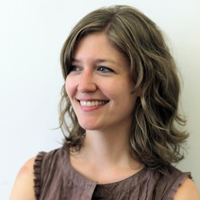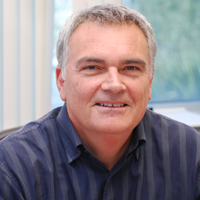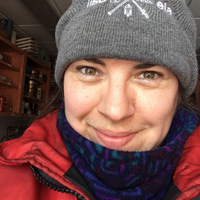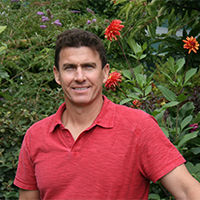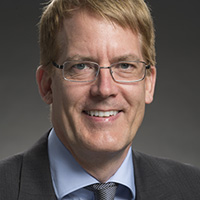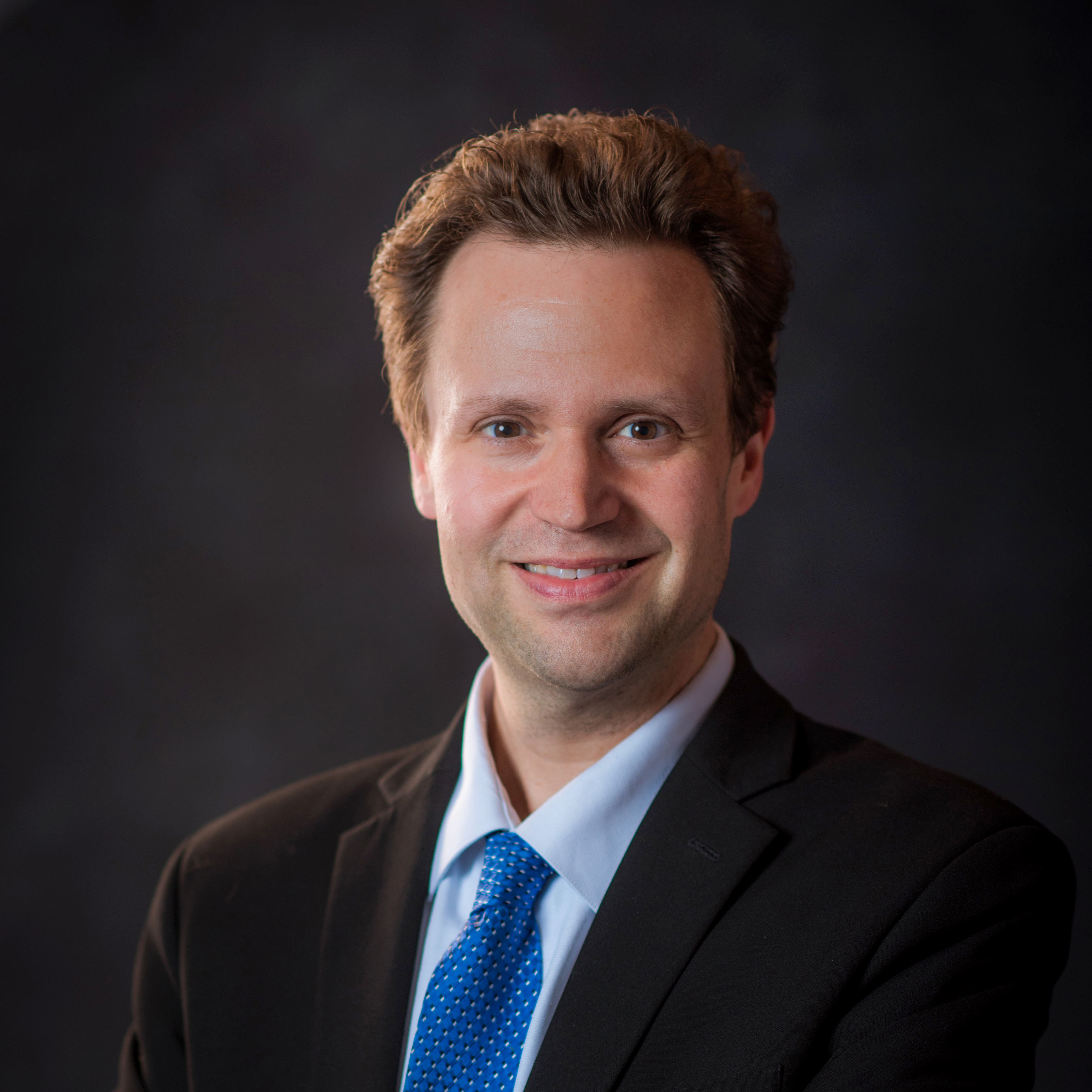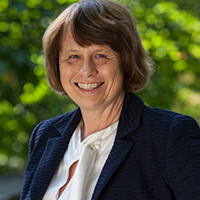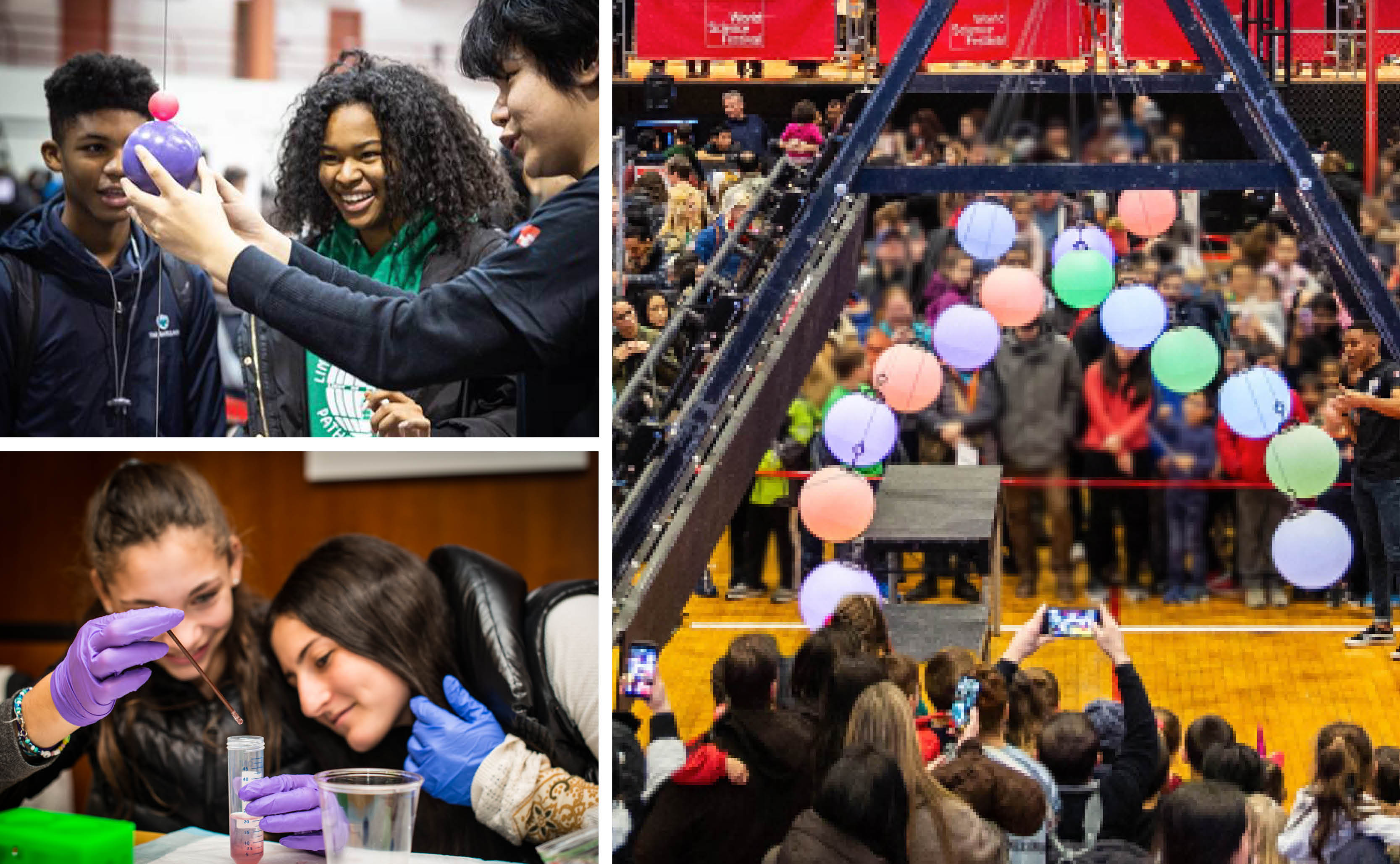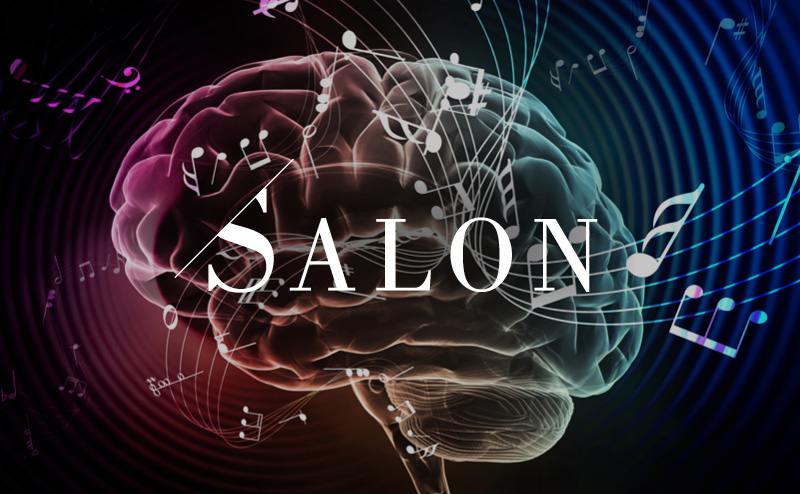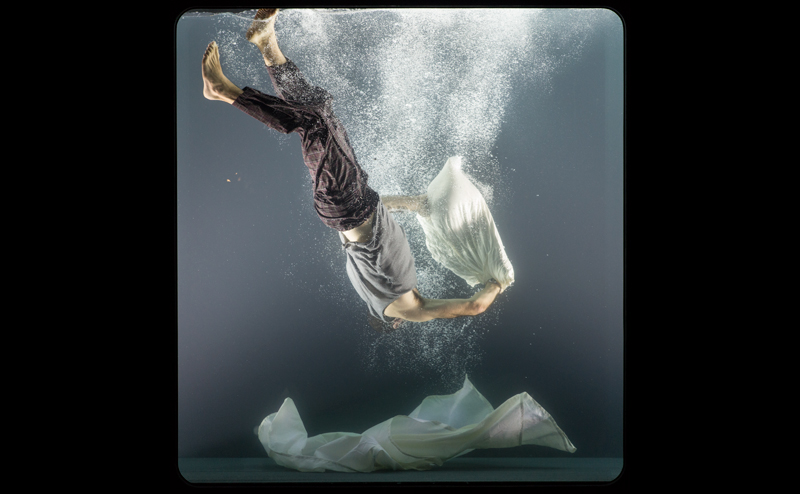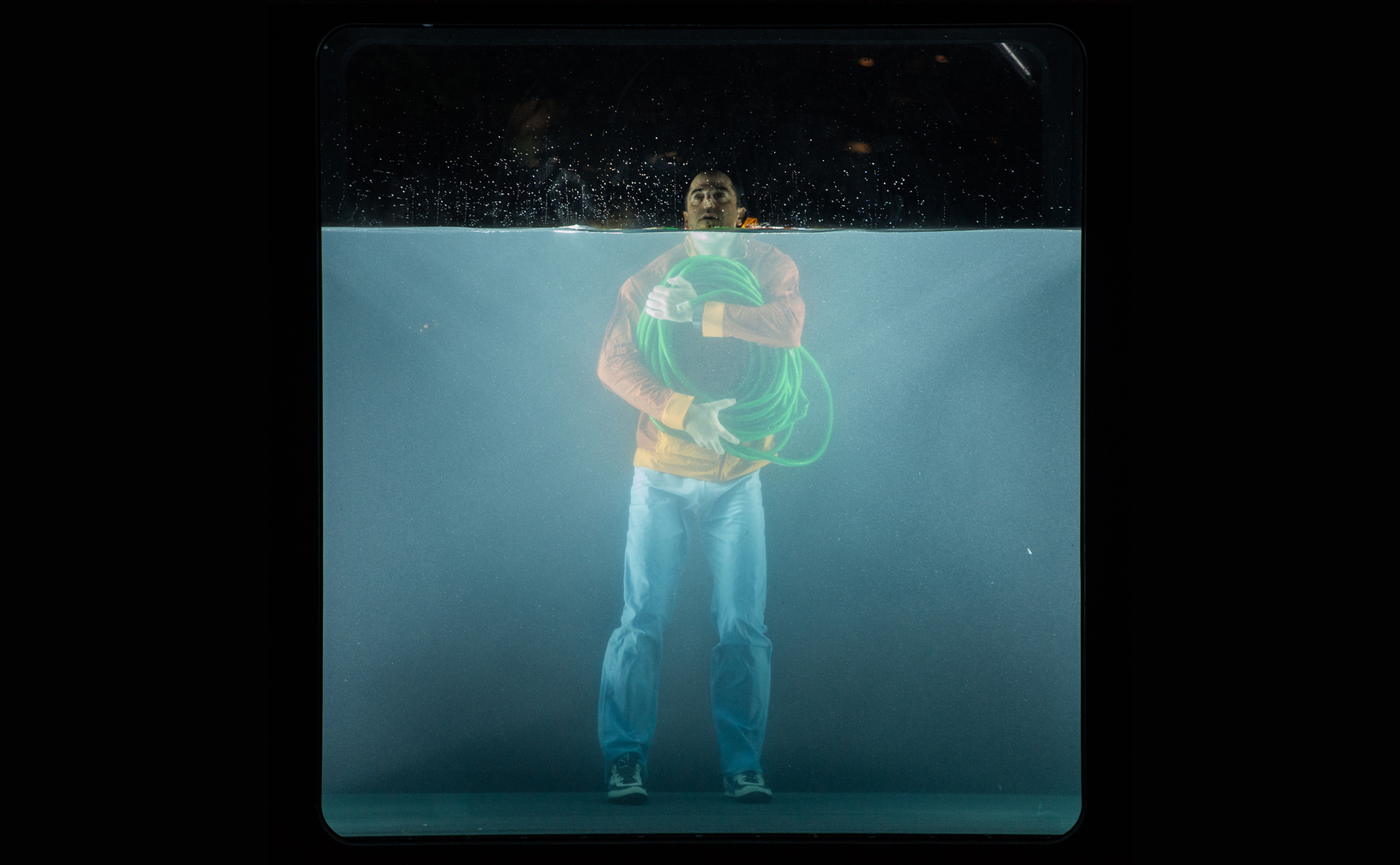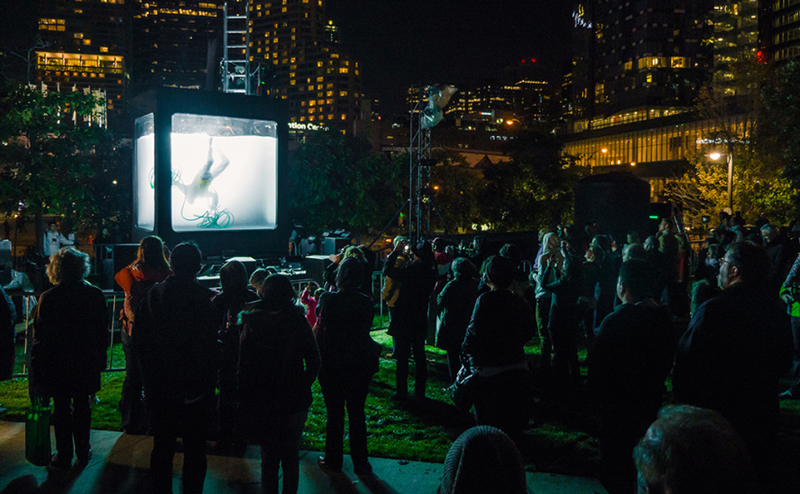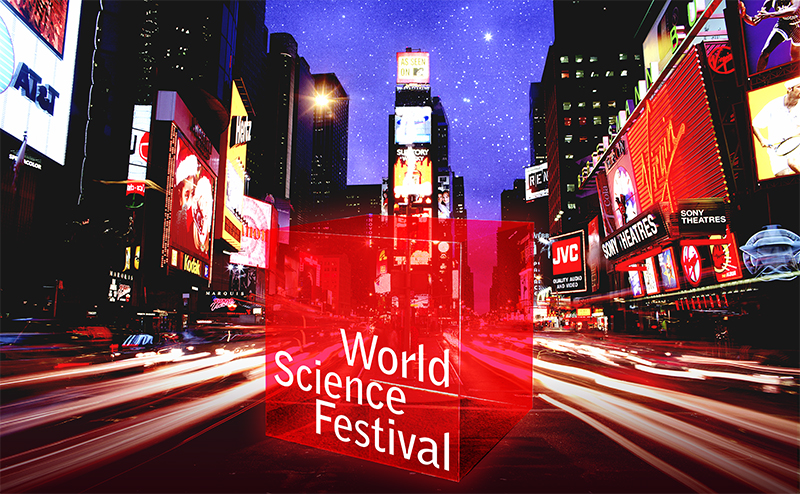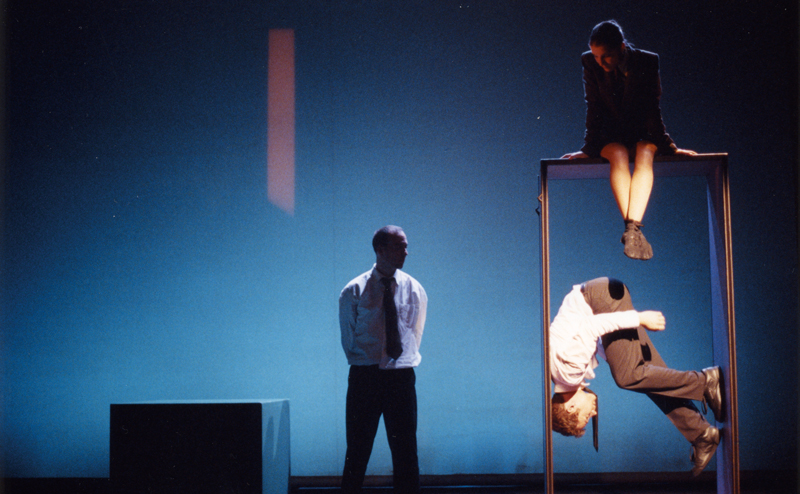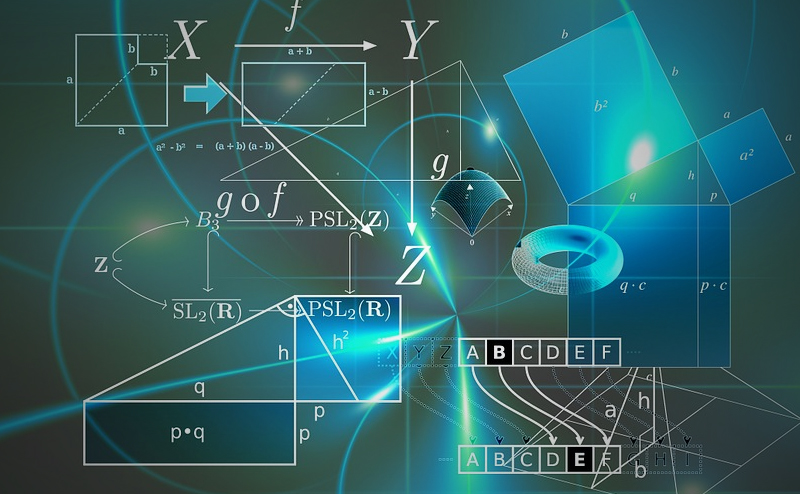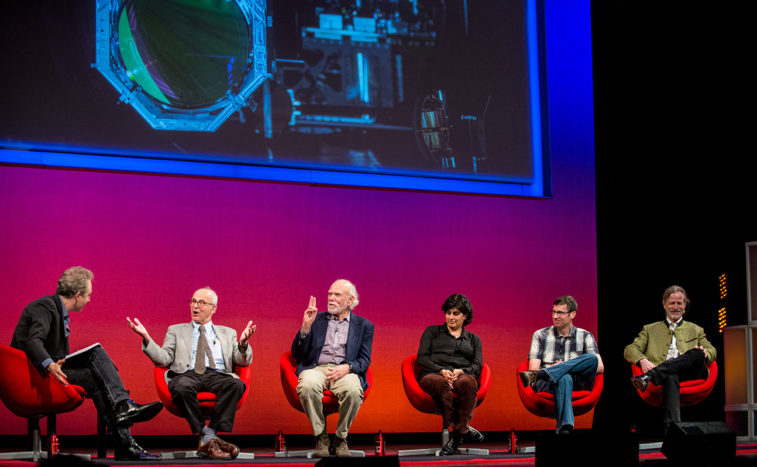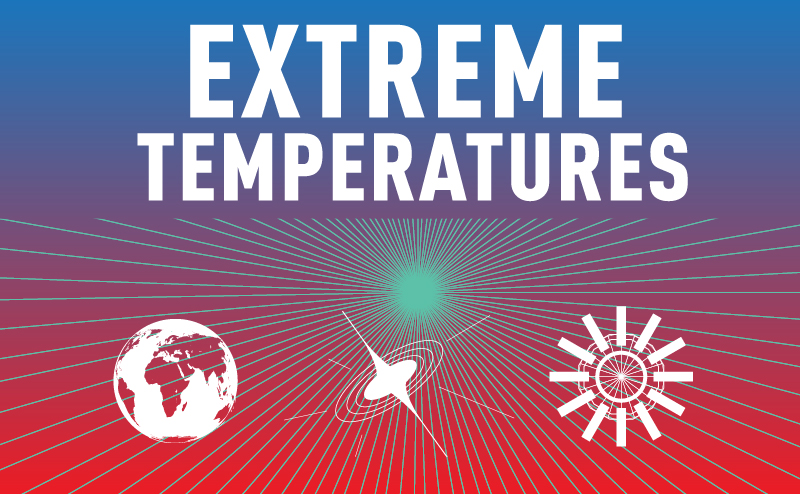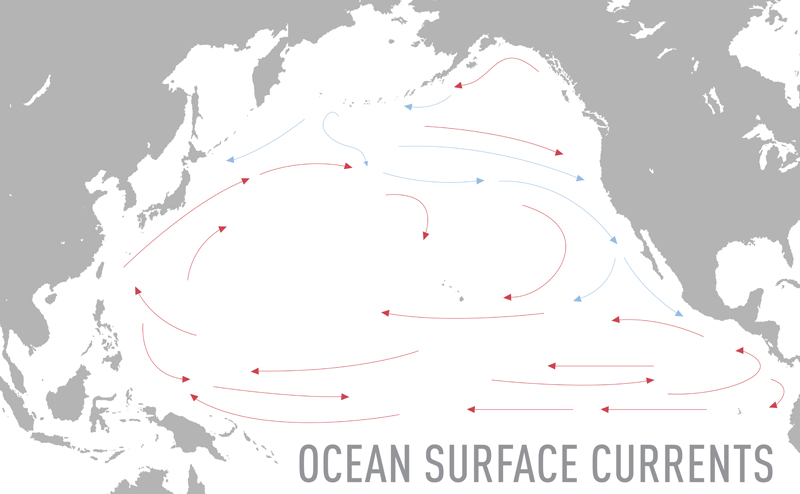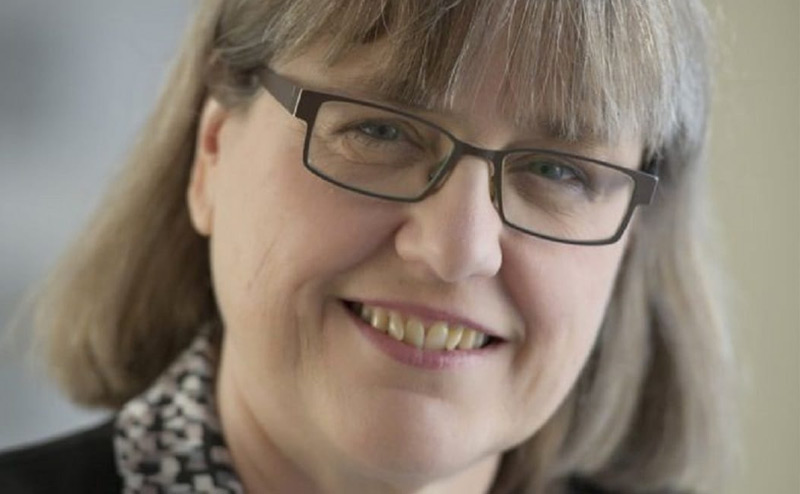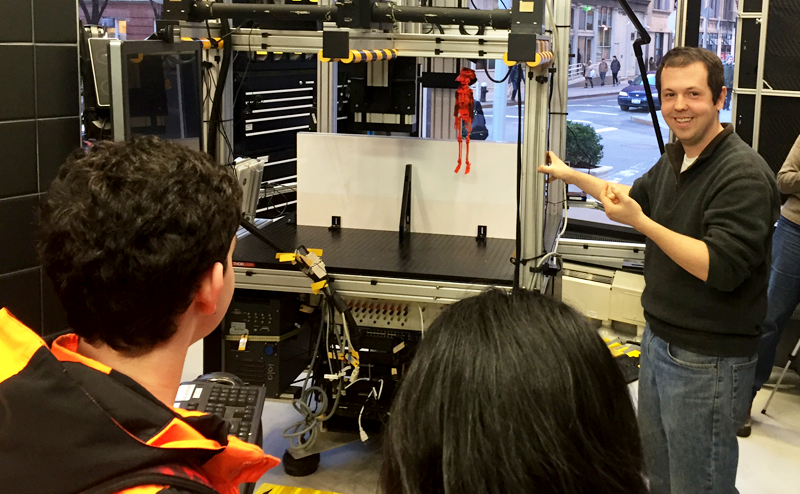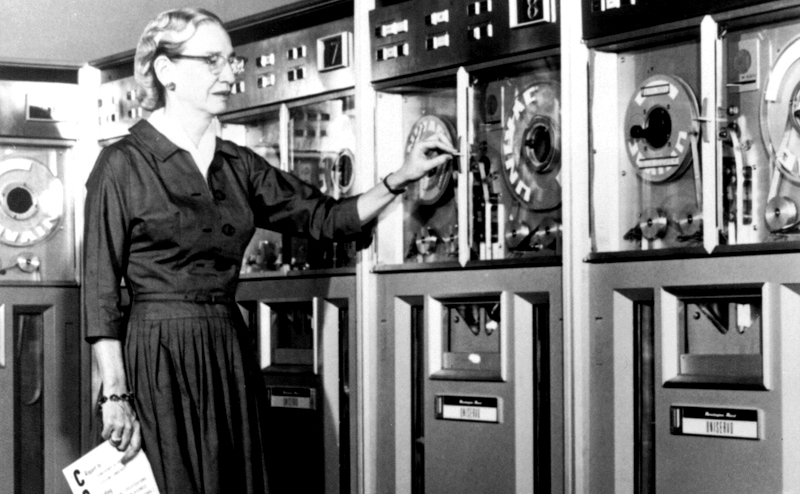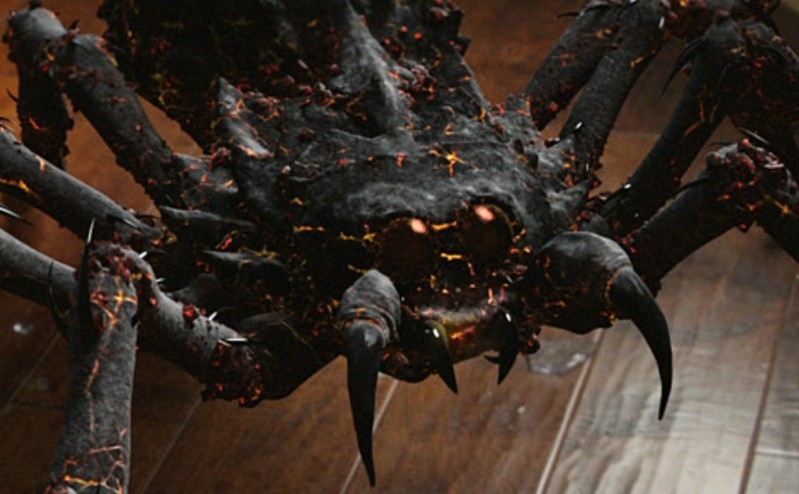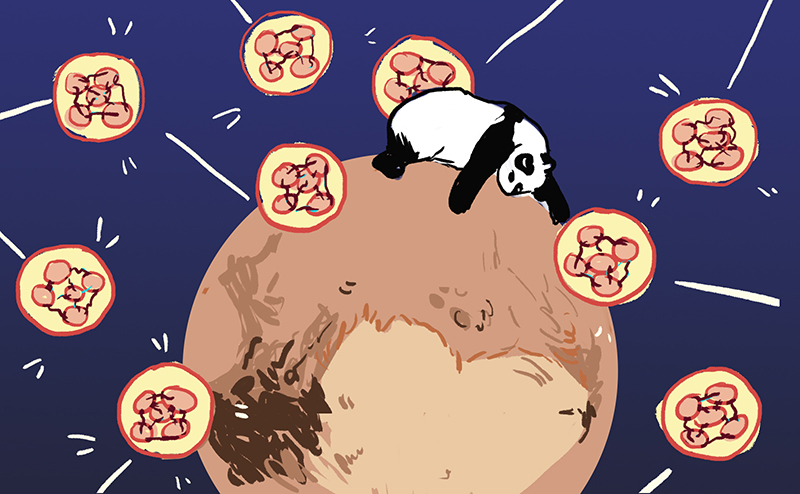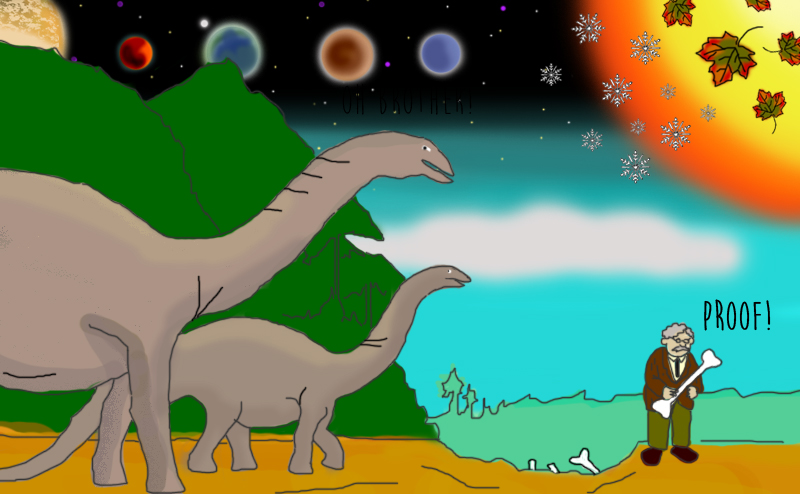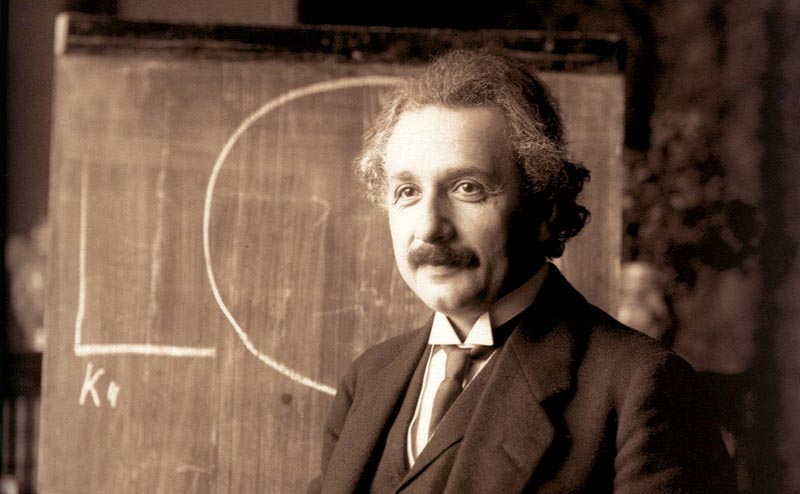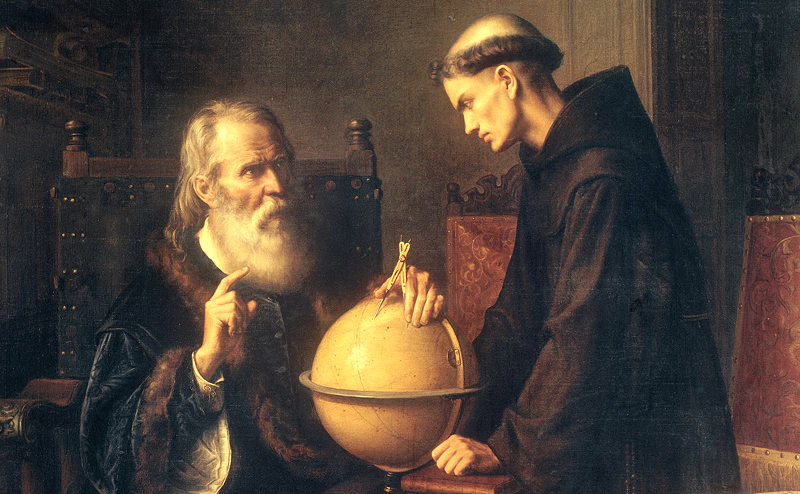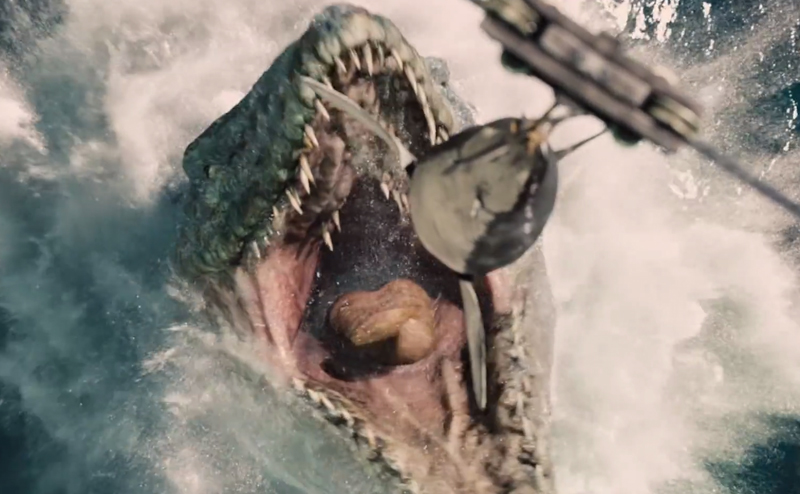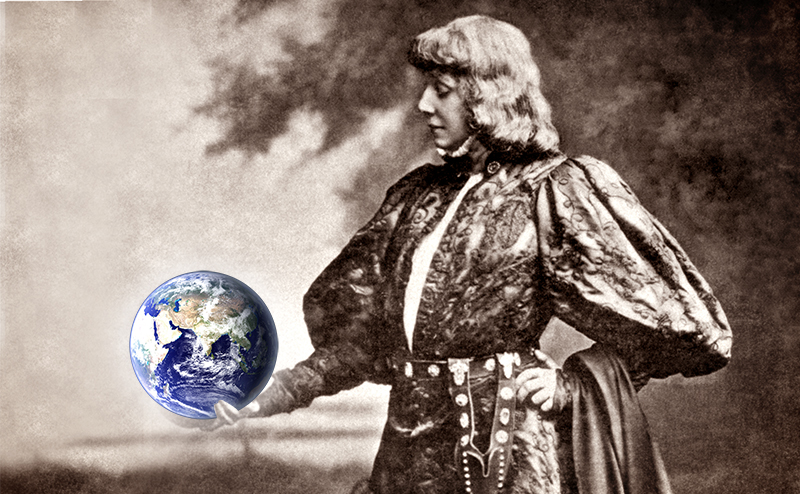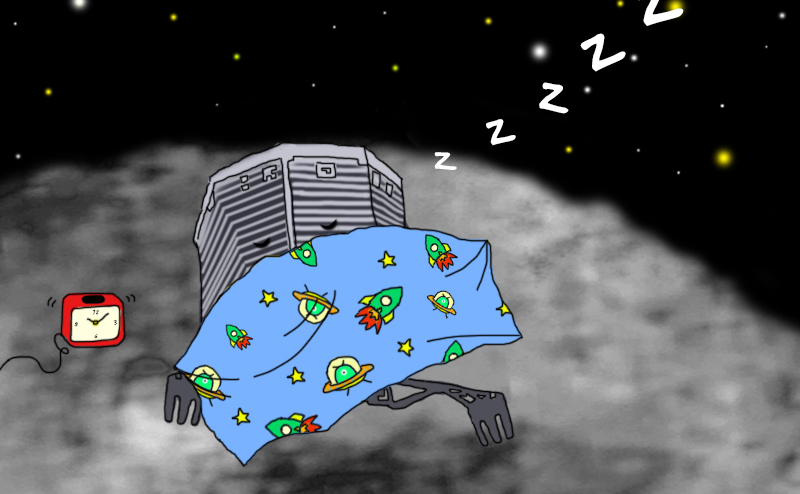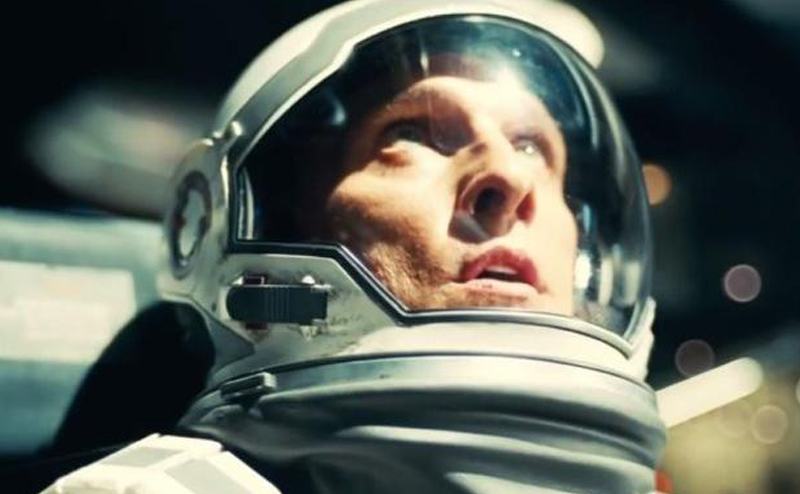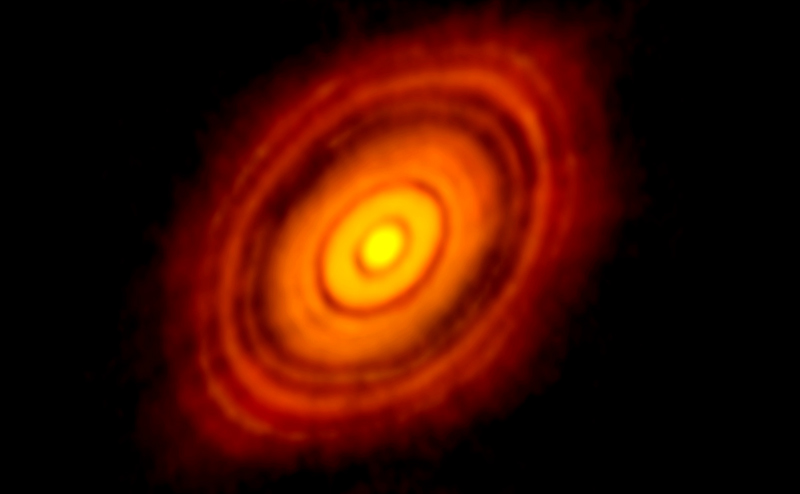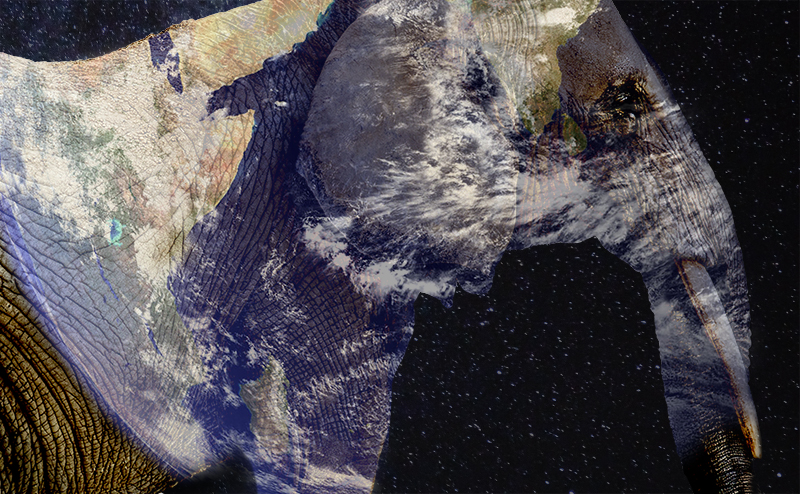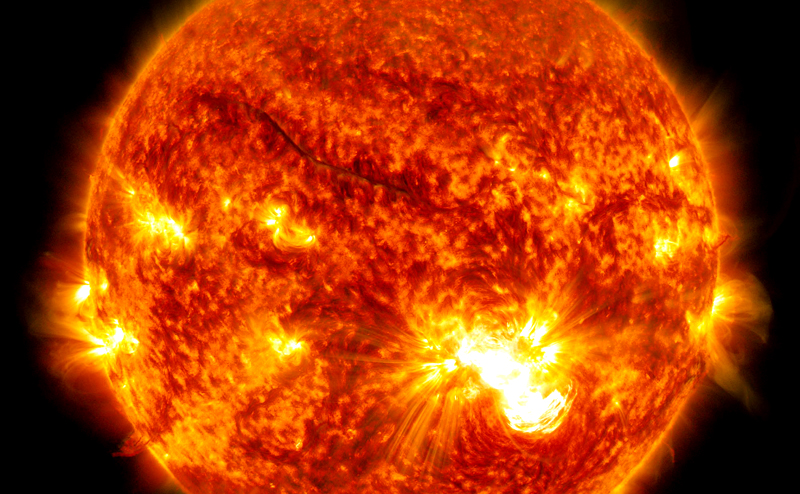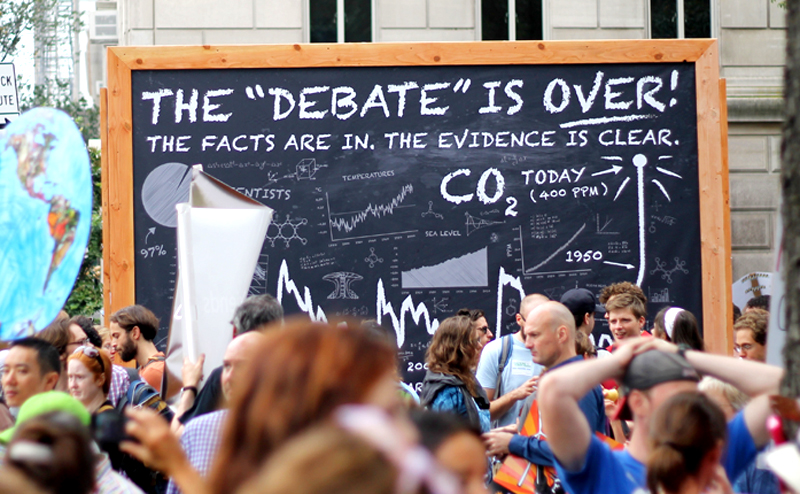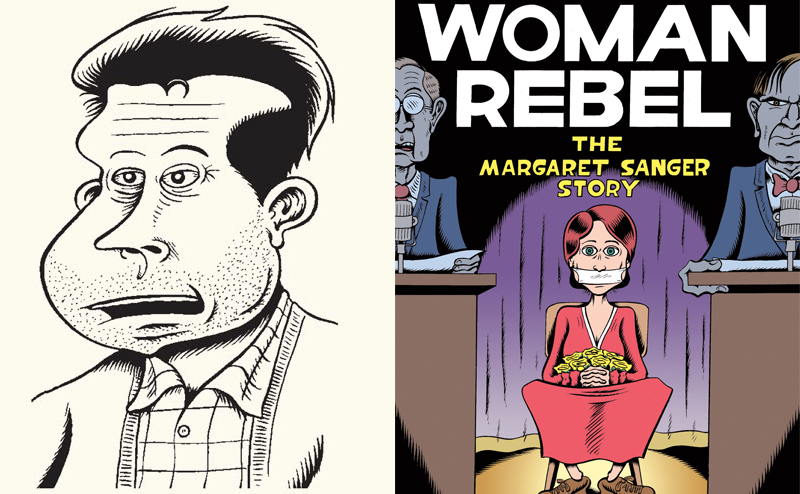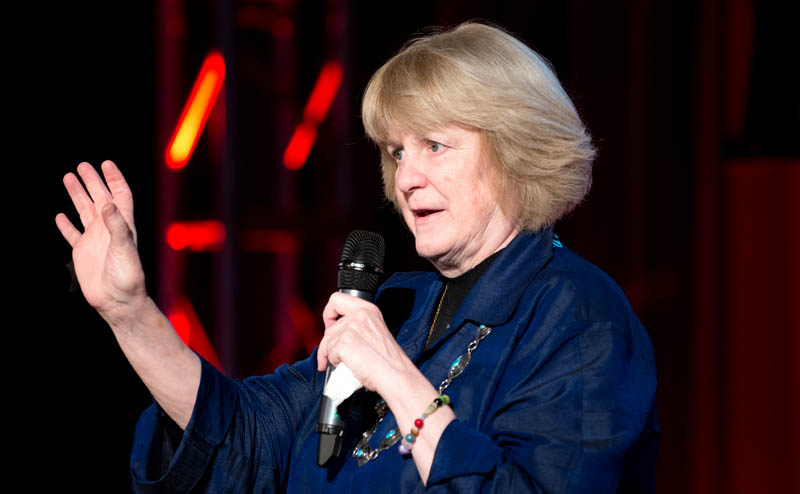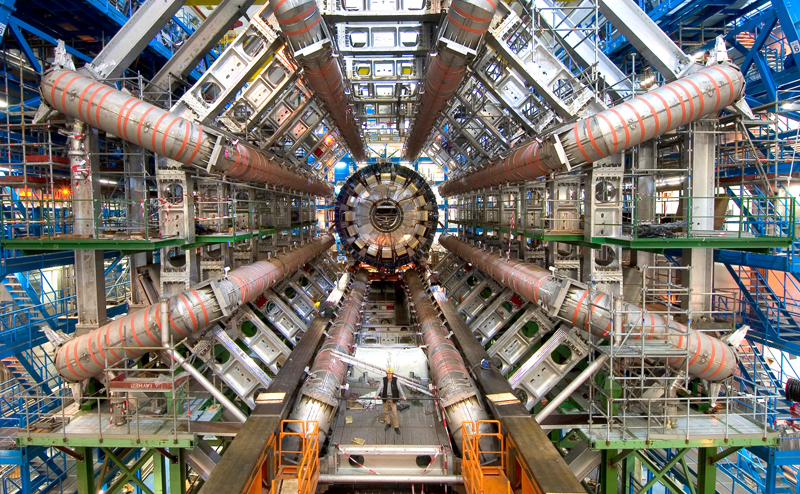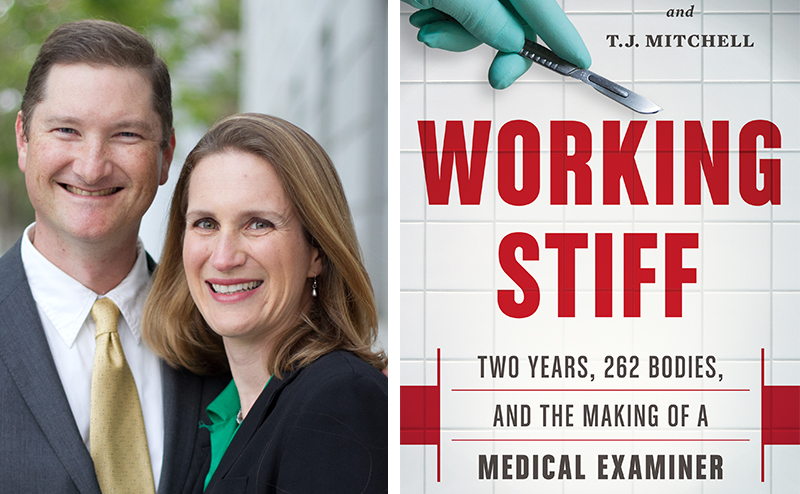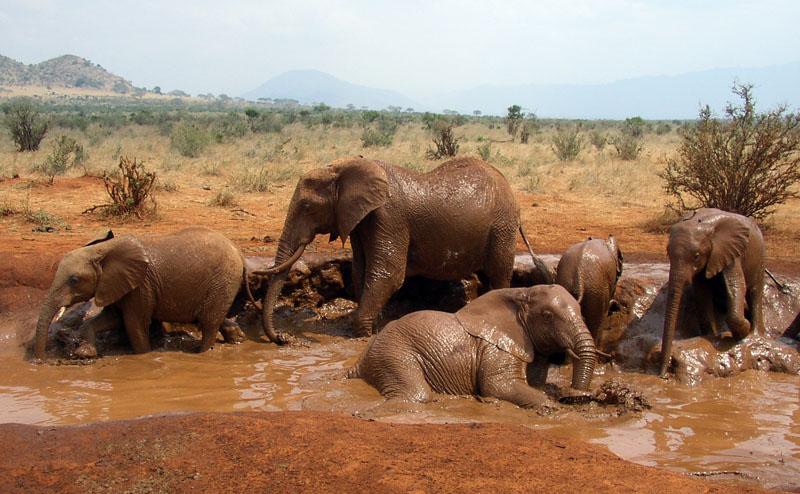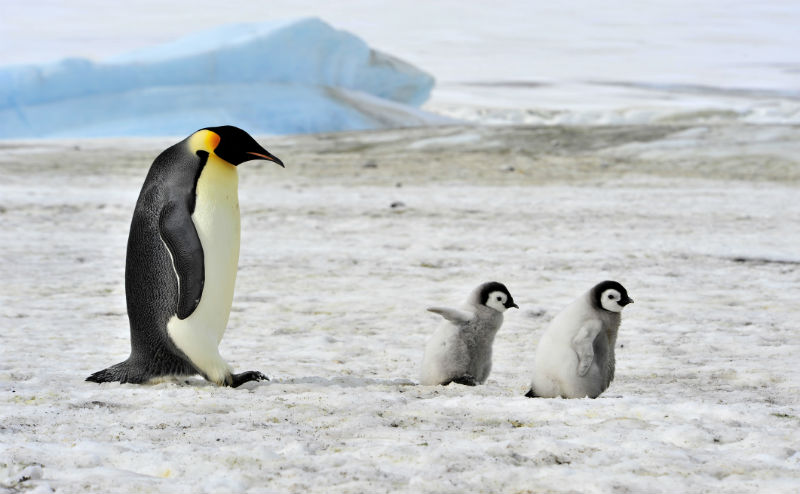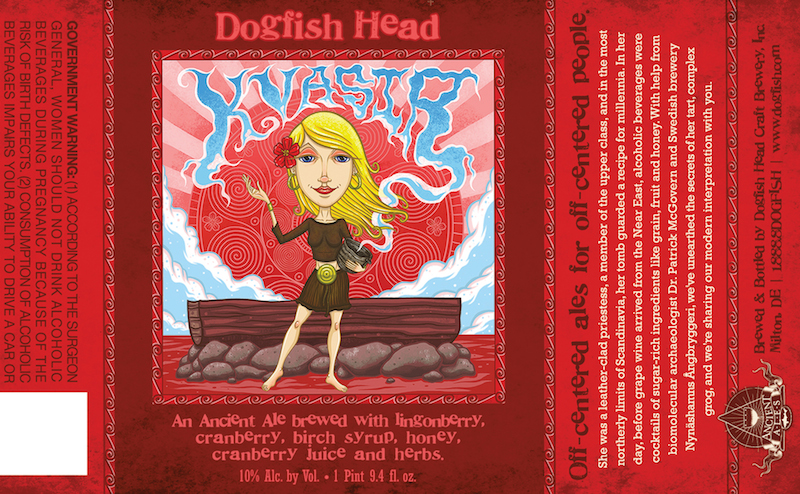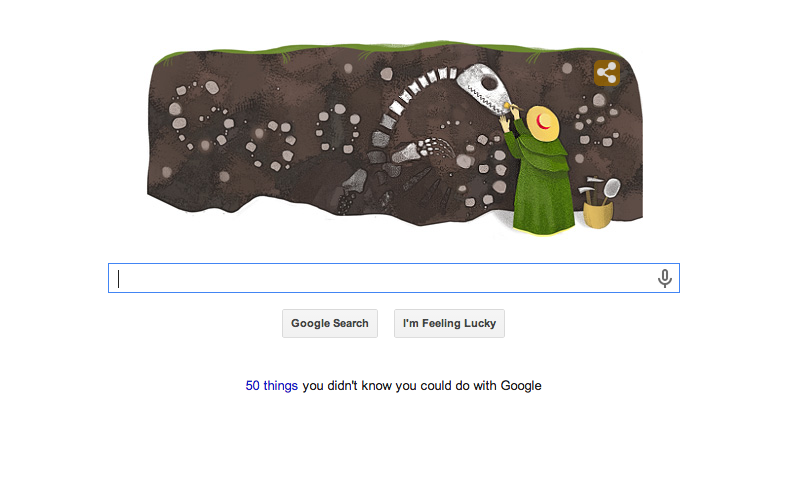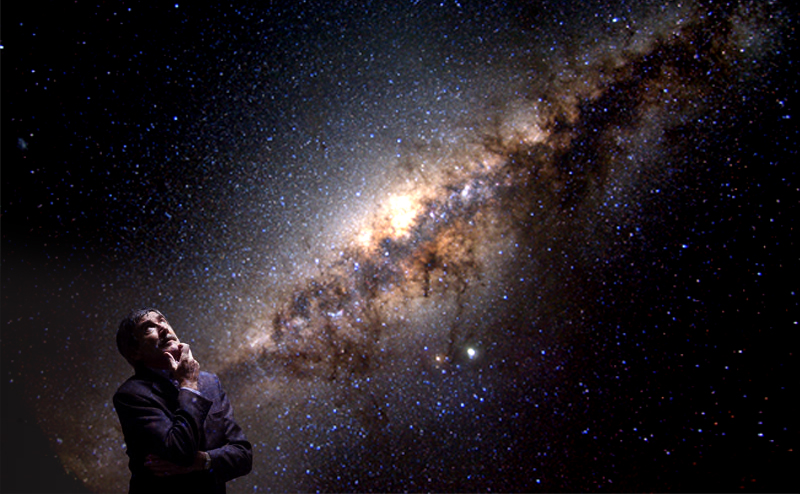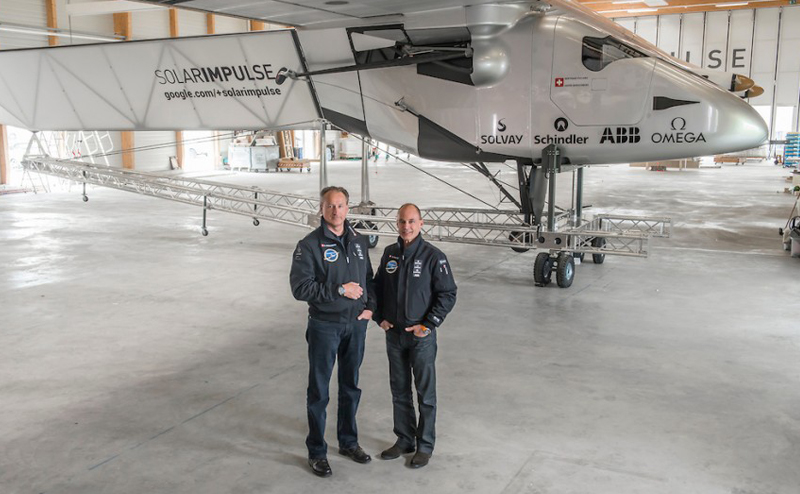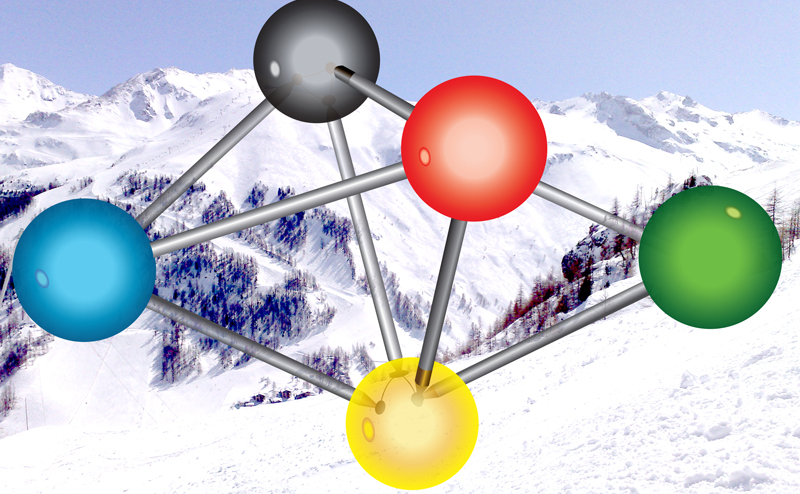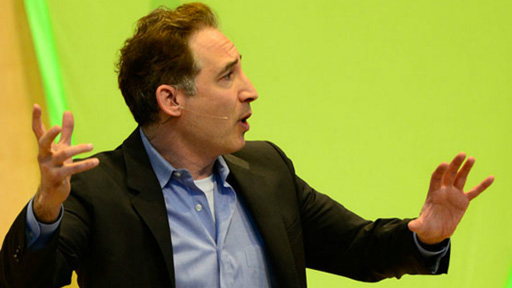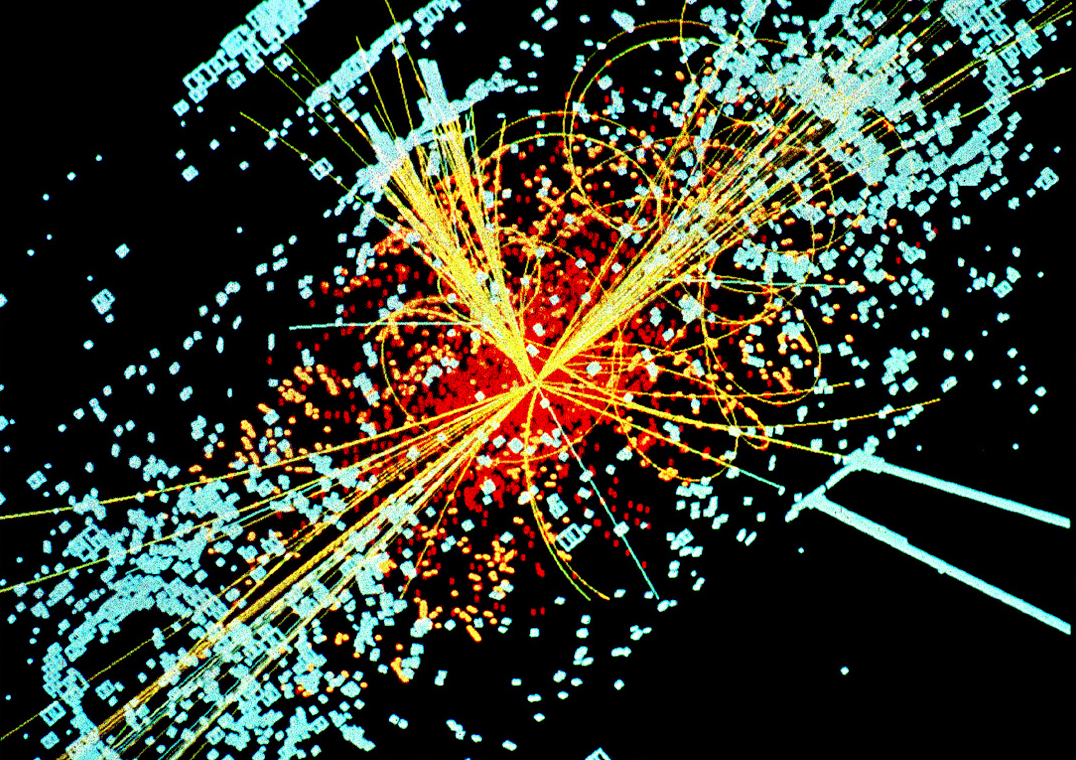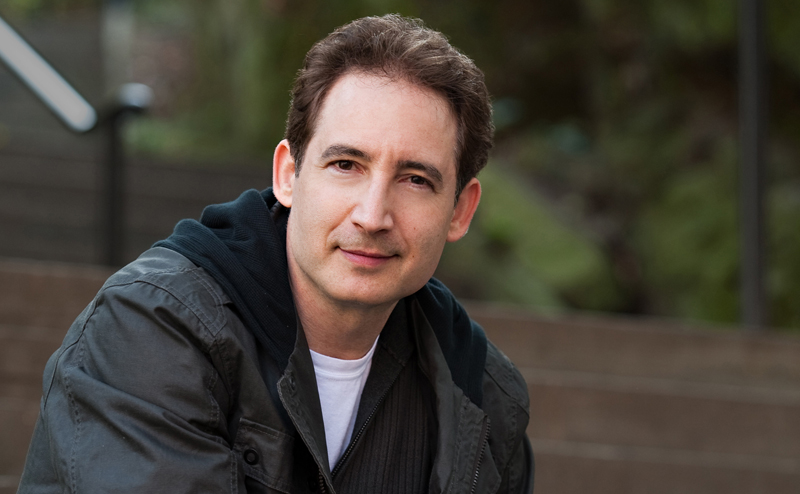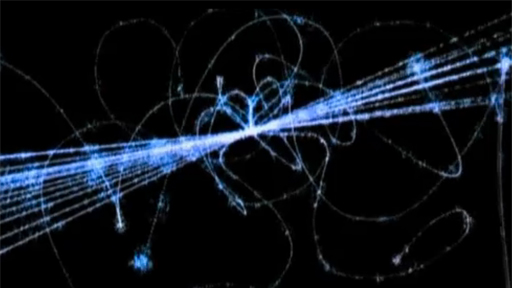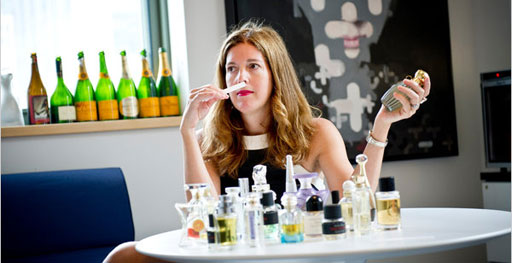Participants
Chuck Close is a visual artist noted for his highly inventive techniques used to paint the human face, and is best known for his large-scale, photo-based portrait paintings. He has also participated in nearly 800 group exhibitions. In 1988, Close was paralyzed following a rare spinal artery collapse; he continues to paint using a brush-holding device strapped to his wrist and forearm.
Read MoreA professional magician, Arthur Benjamin can multiply large numbers faster than a calculator, figure out the weekday of any date in history, and has memorized the decimal numbers of Pi out to 100 digits.
Read MoreLinda Dalrymple Henderson is the acknowledged expert on the history of modern artists’ engagement with a possible fourth dimension of space, a widespread cultural preoccupation in the early 20th century before the popularization of the temporal fourth dimension of Einstein’s Relativity Theory.
Read MoreLaura Danly is a spectroscopist specializing in ultraviolet observations from space satellites. Her research focuses on the large-scale distribution and dynamics of the interstellar medium and its relationship to galaxy evolution.
Read MoreMark Whittle uses large optical and radio telescopes, including the Hubble Space Telescope, to study processes occurring within 1,000 light years of the central supermassive black hole in Active Galaxies.
Read MoreMarcela Carena is an internationally renowned expert on revolutionary ideas in particle physics, ideas about to be tested at the Large Hadron Collider. She has worked closely with experimental physicists at the Fermilab and CERN laboratories developing strategies for discovery at the world’s highest-energy particle colliders.
Read MoreMonica Dunford is an experimental high-energy particle physicist who helped bring the ATLAS detector at CERN into operation for the first Large Hadron Collider beam and collisions.
Read MoreBorn in Baltimore, Maryland, Philip Glass is a graduate of the University of Chicago and the Juilliard School. In the early 1960s, Glass spent two years of intensive study in Paris with Nadia Boulanger and while there, earned money by transcribing Ravi Shankar’s Indian music into Western notation.
Read MoreJennifer Klay is an expert in high-energy nuclear collisions, who helped discover the phenomenon of jet quenching in nuclear collisions with the STAR experiment at Brookhaven National Lab’s Relativistic Heavy Ion Collider.
Read MoreLawrence Weschler was for over 20 years a staff writer at The New Yorker, where his work shuttled between political tragedies and cultural comedies. He is a two-time winner of the George Polk Award, for Cultural Reporting in 1988 and Magazine Reporting in 1992, and was also a recipient of the Lannan Literary Award.
Read MoreBenjamin West brings improved cook stoves to less developed countries, working under the philosophy that appropriate technology and entrepreneurship can bring large-scale social, environmental and economic development to the world.
Read MoreRob Boyd is Professor of Anthropology at UCLA. He studies the evolution of cooperation in large groups, and is the co-author of numerous books on cultural evolution, including Not By Genes Alone.
Read MoreDickson Despommier is a trailblazer, devising solutions to problems in agriculture and public health that likely will be magnified by climate change. A microbiologist, he is a Professor of Public Health at Columbia University’s Mailman School, where he developed the idea of growing food in urban farm skyscrapers.
Read MorePaul D. Miller aka DJ Spooky That Subliminal Kid is a composer, multimedia artist and writer. His written work has appeared in The Village Voice, The Source, Artforum, and Rapgun among other publications.
Read MoreGeorge Ellis is Professor Emeritus of Applied Mathematics at the University of Capetown and investigates cosmology, the nature of time, and the emergence of complexity. He is the co-author with Stephen Hawking of The Large Scale Structure of Space Time.
Read MoreHarold Evans is an editor and author of two critically acclaimed best-selling histories of America: The American Century and, most recently, They Made America: From the Steam Engine to the Search Engine: Two Centuries of Innovators.
Read MoreBestselling Author
Sean Carroll is the Homewood Professor of Natural Philosophy at the Johns Hopkins University, and an External Professor at the Santa Fe Institute. Prior to that he was a research …
Read MoreYoon Chang joined Argonne National Laboratory in 1974 and has been responsible for leadership of advanced reactor design and fuel cycle technology development activities in positions of increasing responsibility.
Read MoreJohn-Dylan Haynes is a leading expert investigating neural correlates of consciousness and volitional processing, and has developed groundbreaking methods for decoding or “reading out” a person’s mental states from their brain activity.
Read MoreKurt Andersen is the author of two novels, the critically acclaimed bestsellers Heyday and Turn of the Century. His forthcoming book is called Reset: How This Crisis Can Restore Our Values and Renew America. He is also host and co-creator of the Peabody Award-winning public radio program Studio 360.
Read MoreVera C. Rubin was an observational astronomer who studied the motions of gas and stars in galaxies and motions of galaxies in the universe for 75 percent of her life. …
Read MoreRecognized mathematician and science writer Amir D. Aczel is the author of numerous books that have appeared on various bestseller lists in the United States and abroad, with translations into 22 languages. Present at the Creation: The Story of CERN and the Large Hadron Collider is his most recent literary contribution.
Read MoreGlennys Farrar is a collegiate professor of physics at New York University. She has made seminal contributions to theoretical particle physics, including demonstrating that quarks are not just mathematical constructs but are actually physically present in matter and pioneering the search for supersymmetry.
Read MoreDavid Spergel studies the big questions in cosmology and astrophysics: How large is the universe, and what is its shape? Is it finite? What are the dark matter and dark …
Read MoreEd Green has helped pioneer the use of advanced genetic sequencing technology to read ancient DNA extracted from fossilized bones. In 2010, he and large collaboration of other scientists announced that they had used 40,000-year-old bone fragments excavated in a cave in Croatia to map out the genetic code of Neanderthals, humans’ long-dead ancestral cousins.
Read MoreTomás Saraceno’s work defies traditional notions of space, time, gravity, consciousness and perception through architectural, social and communitarian means that are utopian and participatory. His installations blend the boundary between sky and the earth, creating the sensation of flight.
Read MoreJarod Miller is a young naturalist, zoologist, pet expert, and regular guest lecturer for zoos, universities, and promotional events, having lectured on captive management and wildlife conservation at venues including the White House.
Read MoreSuzanne Staggs is an experimental physicist who uses cutting-edge detectors and optical technology to measure the cosmic microwave background, the low-level radiation left over from the very first moments of the universe. A physics professor at Princeton University, Staggs is now in charge of the detectors for the Atacama Cosmology Telescope project.
Read MoreFor the past sixteen years, American composer Tyondai Braxton has been actively involved in music composition and performance. His music has received critical acclaim from an extraordinarily diverse expanse of the music world.
Read MoreSandro Galea is a physician and an epidemiologist. He is the Anna Cheskis Gelman and Murray Charles Gelman Professor and Chair of the Department of Epidemiology at the Columbia University Mailman School of Public Health.
Read MoreHowie Choset is a professor of robotics at Carnegie Mellon University. Motivated by applications in confined spaces, Choset has created a comprehensive program in snake robots, which has led to basic research in mechanism design, path planning, motion planning, and estimation.
Read MoreThe Babycastles story has been one of opening new cultural territory for independent video games by inserting them aggressively into new spaces. This includes DIY punk-houses, Brooklyn music culture, art galleries, wearable games dance parties, and the Museum of Modern Art.
Read MorePhilip White’s performances center on a non-linear feedback system, which consists of a mixer and several homemade circuits. In addition to his work with analog and digital electronics, White has written extensively for chamber ensembles and created a large body of intermedia pieces.
Read MoreKate Stafford is a principal oceanographer in the applied physics laboratory at the University of Washington. Stafford’s research focuses on the use of passive acoustic monitoring to study geographic and seasonal variation of large whale species.
Read MorePeter Staley has been a long-term AIDS and gay rights activist, first as a member of ACT UP New York, then as the founding director of TAG, the Treatment Action Group. He served on the board of the American Foundation for AIDS Research (amfAR) for 13 years.
Read MoreWilliam Hugh Woodin is a set theorist at University of California, Berkeley. He has made many notable contributions to the theory of inner models and determinacy. His recent work on Ω-logic suggests an argument that the continuum hypothesis is false.
Read MoreEdwin Olson is an assistant professor of computer science and engineering at the University of Michigan. His research focuses on autonomous robots, ranging from self-driving cars to teams of robots that work together to perform search and rescue missions. He received a Ph.D. from the Massachusetts Institute of Technology in 2008 for his work in robust robot mapping.
Read MoreJean-Pierre Issa is a professor of medicine and director at Fels Institute for Cancer Research and Molecular Biology at Temple University. Issa’s laboratory has made important contributions to the understanding of the importance of epigenetics in the pathophysiology and treatment of cancer.
Read MoreRafael Yuste is professor of biological sciences and neuroscience at Columbia University. He was born in Madrid, where he obtained his M.D. at the Universidad Autónoma. He performed Ph.D. studies with Larry Katz in Torsten Wiesel’s laboratory at Rockefeller University and was a postdoctoral student of David Tank at Bell Labs.
Read MoreMassimo Porrati is a professor of physics, and a member of the Center for Cosmology and Particle Physics, at New York University. His major research interests are string theory, supersymmetry and supergravity, nonperturbative aspects of strings and quantum field theory, and cosmology.
Read MoreJoel David Hamkins conducts research in mathematical and philosophical logic, particularly set theory, with a focus on the mathematics and philosophy of the infinite.
Read MoreDavid Brenner is the Director of the Columbia University Center for Radiological Research, which is the oldest and largest radiological research laboratory, worldwide. He is also the Principal Investigator of the Center for High-Throughput Minimally-Invasive Radiation Biodosimetry.
Read MoreClaudia Raschke is an award-winning cinematographer who has worked on feature films and documentaries for more than 20 years. Her most recent feature documentary, Particle Fever, follows the quest for the Higgs Boson and the launch of the Large Hadron Collider.
Read MoreRob DeSalle works in molecular systematics, microbial evolution, and genomics. His current research concerns the development of bioinformatic tools to handle large-scale genomics problems using phylogenetic systematic approaches.
Read MoreAnna Christina Nobre (known as Kia Nobre) is a cognitive neuroscientist interested in understanding the principles of the neural systems that support cognitive functions in the human brain. Her current research looks at how neural activity linked to perception and cognition is modulated according to memories, task goals, and expectations.
Read MoreMaria Spiropulu is the Shang-Yi Ch’en Professor of Physics at the California Institute of Technology. Born and educated in Macedonia/Greece, she moved to the U.S. to pursue her Ph.D. at …
Read MoreA.J. Jacobs is the author of four New York Times bestsellers about self-experimentation, including Drop Dead Healthy, The Year of Living Biblically, My Life as an Experiment and The Know-It-All. He is the editor at large at Esquire magazine and a correspondent for NPR.
Read MoreKyle Cranmer is a physicist and a professor at New York University at the Center for Cosmology and Particle Physics and Affiliated Faculty member at NYU’s Center for Data Science. He is an experimental particle physicist working, primarily, on the Large Hadron Collider, based in Geneva, Switzerland.
Read MoreDaniel Gottesman is a faculty member at the Perimeter Institute in Waterloo, Ontario. He does research in the field of quantum computation, particularly quantum error correction, fault-tolerant quantum computation, quantum complexity, and quantum cryptography.
Read MoreJosh Frieman is a senior staff scientist at the Fermi National Accelerator Laboratory and Professor of Astronomy & Astrophysics. He’s also a member of the Kavli Institute for Cosmological Physics at the University of Chicago.
Read MoreGabriela González is a professor in the Department of Physics and Astronomy at Louisiana State University (LSU), where there is a large group of people working on the detection of gravitational waves, both in theory and experiment.
Read MoreJake Hofman is a Researcher at Microsoft Research in New York City, where his work in computational social science involves applications of statistics and machine learning to large-scale social data. Prior to joining Microsoft, he was a member of the Microeconomics and Social Systems group at Yahoo! Research.
Read MoreRadu Sion is a professor at Stony Brook University (on leave), the director of the National Security Institute, and the CEO of Private Machines Inc. Sion’s research is in cyber security and large-scale computing. He has published 85-plus peer-reviewed works in top venues and has organized 65-plus conferences.
Read More59 Productions is a multi-award-winning design studio and production company based in London and New York. Whether creating stage productions, museum installations, live music shows, large-scale events, or films, 59’s team generates creative and technical ideas to help realize ambitious artistic projects.
Read MoreFrans Pretorius is a Professor of Physics at Princeton University. His primary field of research is general relativity, specializing in numerical solution of the Einstein equations.
Read MoreLaura Kloepper is an Assistant Professor in the Department of Biology at Saint Mary’s College in Notre Dame, Indiana. She researches echolocation in toothed whales, dolphins, and bats.
Read MoreMerry Camhi is director of the Wildlife Conservation Society’s New York Seascape program. This initiative, based at the NY Aquarium, seeks to raise public awareness and action to conserve threatened marine wildlife and habitats in the New York Bight, through field research, improved policy, and education.
Read MoreEric Chown is a professor of Computer Science at Bowdoin College. In 2012 he helped create Bowdoin’s Digital and Computational Studies program and has served as Co-Director of the program ever since. Since 2005 he has led Bowdoin’s RoboCup team, the Northern Bites, in worldwide robotic soccer competitions.
Read MoreDuncan Watts is a principal researcher at Microsoft Research and a founding member of the MSR-NYC lab. He is also an AD White Professor at Large at Cornell University. Prior to joining MSR, he was from 2000-2007 a professor of Sociology at Columbia University, and then a principal research scientist at Yahoo! Research.
Read MoreJesse Engel is a research scientist with Google Brain’s Magenta team on the coevolution of artificial intelligence algorithms and their creative applications. He received his Bachelors, Ph.D., and Postdoc degree from UC Berkeley.
Read MoreDr. John R. Smith is an IBM Fellow and Manager of Multimedia and Vision at IBM T. J. Watson Research Center. He leads IBM’s Research & Development on Visual Comprehension including IBM Watson Developer Cloud Visual Recognition, Intelligent Video Analytics, and Video Understanding for Augmented Creativity.
Read MoreIvan Oransky, MD, is a Distinguished Writer in Residence at New York University’s Arthur Carter Journalism Institute, co-founder of Retraction Watch, and editor at large of MedPage Today. Previously, he was executive editor of Reuters Health and held editorial positions at Scientific American and The Scientist.
Read MoreNima Arkani-Hamed is a theorist with wide interests in fundamental physics, from quantum field theory and string theory to collider physics and cosmology. He was educated at Toronto, Berkeley and Stanford, was a professor of physics at Berkeley and Harvard before joining the Institute for Advanced Study in 2008.
Read MoreDr. Aprille J. Ericsson is the first female to receive a Ph.D. in Mechanical Engineering from Howard University, and the first African-American civil servant female to receive a Ph.D. in Engineering at NASA GSFC. She received her B.S. in Aeronautical/Astronautical Engineering from MIT.
Read MoreKathryn Hume is VP Product & Strategy for integrate.ai, a Toronto-based startup that helps large enterprises reinvent customer experiences using artificial intelligence. Prior to joining integrate.ai, Hume was President of Fast Forward Labs.
Read MoreMichael Hildreth is Professor of Physics at the University of Notre Dame. Next to working on the CMS experiment at CERN’s Large Hadron Collider, Hildreth is also the PI for the NSF-sponsored DASPOS project, a collective effort to explore the realization of a viable data, software, and computation preservation architecture for high-energy physics.
Read MoreDr. Kirk Borne is the Principal Data Scientist in the Strategic Innovation Group at Booz-Allen Hamilton since 2015. He was Professor of Astrophysics and Computational Science in the George Mason University (GMU) School of Physics, Astronomy, and Computational Sciences during 2003-2015
Read MoreMichael Tuts is experimental particle physicist whose early research focused on the spectroscopy of the b-bbar bound states (the Upsilons) using the CUSB detector at the Cornell Electron Storage Ring (CESR). Presently, his research is on the D0 experiment at Fermilab and the ATLAS experiment at the LHC located at CERN.
Read MoreHitoshi Murayama is a theoretical physicist who works on the connection between the physics of the small (elementary particles) and the large (the Universe). He is also a founding director of the Kavli Institute for the Physics and Mathematics of the Universe at the University of Tokyo and he’s a member of American Academy for Arts and Sciences, as well as Science Council of Japan.
Read MoreMatt Lanier has worked at the Staten Island Zoo for almost 17 years. During his time in Staten Island, he helped in the development and construction of a new Reptile Wing. His everyday animal duties at the zoo have mainly focused on the care and maintenance of the large venomous collection which includes cobras, Asian pit vipers, and of course rattlesnakes, which the Staten Island Zoo is known for around the world.
Read MoreTimnit Gebru works in the Fairness Accountability Transparency and Ethics (FATE) group at Microsoft Research, New York. She is currently studying the ethical considerations underlying any data mining project, and methods of auditing and mitigating bias in sociotechnical systems.
Read MoreMichael Benson’s work focuses on the intersection of art and science. A writer, artist, and filmmaker, Benson has staged a series of large-scale shows of reprocessed planetary landscape photography in major museums.
Read MoreBrooke Borel is a Journalist and Author. She has written on everything on everything from biotech in agriculture, to the seedy world of cannabis pesticides, to the history of the bed bug. She is a contributing editor at Popular Science and an editor-at-large at Undark.
Read MoreDr. Edward Large is a Professor of Psychological Sciences and Professor of Physics at University of Connecticut, where he directs research at the Music Dynamics Lab. His expertise is in nonlinear dynamical systems, auditory neuroscience, and music perception.
Read MoreCyndy Desjardins is a Food Web Biologist at the International Institute for Sustainable Development Experimental Lakes Area. She has extensive field experience in limnology research, having managed and trained both laboratory teams and fieldwork teams in a large-scale, multi-year aquatic ecology project.
Read MoreDr. Joe Henrich is currently a Harvard professor and Chair of the Department of Human Evolutionary Biology. Before moving to Harvard, he was a professor of both economics and psychology at the University of British Columbia, where he held the Canada Research Chair in Culture, Cognition and Coevolution.
Read MoreSimon Garnier is an associate professor in the Federated Department of Biology at the New Jersey Institute of Technology and Rutgers-Newark. He is the head of the Swarm Lab, an interdisciplinary research lab that studies the mechanisms underlying collective behaviors and swarm intelligence in natural and artificial systems.
Read MoreJoseph Lykken leads the Fermilab Quantum Division and was formerly Fermilab’s Deputy Director for Research. A distinguished scientist at the laboratory, Lykken was a former member of the Theory Division …
Read MoreE.J. Chichilnisky is the John R. Adler Professor of Neurosurgery, and Professor of Ophthalmology, at Stanford University, where he has worked since 2013 after 15 years at the Salk Institute for Biological Studies.
Read MoreDanielle M. Brown is a PhD student at Rutgers University and an associate researcher with Gotham Whale. Her doctoral research focuses on the foraging ecology of humpback whales in New York and New Jersey, and she assists in managing the New York City Humpback Whale Catalog.
Read MoreMarkus J. Buehler is a materials scientist and engineer at the Massachusetts Institute of Technology. As a professor and the department head at MIT’s Department of Civil and Environmental Engineering, …
Read MoreEwine van Dishoeck is Professor of molecular astrophysics at the Leiden Observatory in the Netherlands. She is co-editor of the Annual Review of Astronomy and Astrophysics, and was president of the International Astronomical Union between 2018 and 2021.
Read MoreKarl Glazebrook is a Distinguished Professor of Astronomy at the Centre for Astrophysics and Supercomputing at Swinburne University of Technology in Melbourne. Karl is an observational astronomer whose research interests …
Read MoreMicrosoft
Sébastien Bubeck is a Partner Research Manager at Microsoft Research (MSR). He won multiple awards for his machine learning results around robustness and optimization. Most recently, he has been interested …
Read More






